Alumni JOU RNAL
SPRING 2024 PUBLISHED BY UPSTATE MEDICAL ALUMNI FOUNDATION


SPRING 2024 PUBLISHED BY UPSTATE MEDICAL ALUMNI FOUNDATION

Sharon Brangman, MD ’81, is setting standards for dementia care at Upstate and beyond.




Katherine
Sharon Brangman, MD ’81, leads
Clinician scientist Jacob Dubroff, MD/PhD ’06, uses nuclear medicine imaging to decode the molecular mechanism of disease.
MEDICAL ALUMNI BOARD OF DIRECTORS
Barbara Anne Morisseau, MD ’98
President
Robert A. Dracker, MD ’82
Vice President
Danielle A. Katz, MD ’97
Treasurer
Barbara Jones Connor, MD ’82
Secretary
Thomas A. Bersani, MD ’82
Richard M. Cantor, MD ’76
Larry S. Charlamb, MD ’88
Peter J. Christiano, MD ’85
Dennis D. Daly, MD ’83
Mantosh Dewan, MD
Mark S. Erlebacher, MD ’79
Brian J. Gaffney, MD ’72
Douglas W. Halliday, MD ’79
Ruth H. Hart, MD ’80
Robert H. Hill, III, MD ’06
Bruce M. Leslie, MD ’78
Barbara Clayton Lutz, MD ’92
Kirsten P. Magowan, MD ’87
Mark S. Persky, MD ’72
Amy L. Reynders, MD ’01
Charles J. Ryan III, MD ’82
K. Bruce Simmons, MD ’79
George L. Stanley, Jr., MD ’94
Ralph L. Stevens, MD ’81
James A. Terzian, MD ’75
EMERITUS
Frederick R. Davey, MD ’64
Richard W. Doust
Karen K. Heitzman, MD ’83
Patricia J. Numann, MD ’65
Michael H. Ratner, MD ’68
Gregory A. Threatte, MD ’73
Jack Yoffa, MD ’69
EX-OFFICIO
Lawrence Chin, MD
Christopher Morley, PhD, MA, CAS
Paul Norcross
Julie White, PhD
STUDENT
REPRESENTATIVES
Adam J. Hatala ’24
Binghamton
Gavrielle Rood ’24
Jewel Estrella ’25
Binghamton
Nathan Ihemeremadu ’25
Katherine Narvaez Mena ’26
Christopher Bushnell ’27
SPRING 2024 ISSUE
Published three times in 2024 in spring, autumn, and winter. Copyright ©2024 by Upstate Medical Alumni Foundation. Opinions expressed are those of the individual authors and subjects and do not necessarily reflect the views of the Alumni Foundation or Upstate Medical University.
Published by the Upstate Medical Alumni Foundation of Upstate Medical University,
Setnor Academic Building #1510, 750 E. Adams St., Syracuse, New York 13210-9976
Issue Number: 91
Submissions and address corrections should be sent to Paul Norcross, SUNY
Upstate Medical University, Setnor Academic Building #1510, 750 E. Adams St., Syracuse, New York 13210-9976
Phone: 315/464-4361
Fax: 315/464-4360
Email: norcrosp@upstate.edu
Paul Norcross
Executive Editor
Renée Gearhart Levy
Managing Editor
Lori Murphy
Associate Managing Editor
Sarah Burns
Ellen Edgerton
Chere Raven
Contributing Editors
Kiefer Creative Design and Production
Jean Albanese
Darryl Geddes
Katherine Narvaez Mena ’26
Contributing Writers
William Mueller
Debbie Rexine
Rich Whelsky
Photographers
Michael H. Ratner, MD ’68, Chair
Thomas Bersani, MD ’82
Fred Davey, MD ’64 Ruth Hart, MD ’80
James Terzian, MD ’75
Editorial Board
JUST A CLICK AWAY
Visit the Medical Alumni web page at medalumni.upstate.edu for special event information, past Alumni Journals, giving opportunities, and more.
Follow us on Facebook at www.facebook.com/ UpstateMedicalAlumni ON THE COVER: Sharon Brangman, MD ’81, photographed at the Nappi Wellness Center
Chris Morley, PhD, chair of the Department of Public Health and Preventive Medicine at the Upstate Medical University Norton College of Medicine, has been elected to the board of directors of the Association for Schools and Programs of Public Health (ASPPH), for a three-year term as a member-at-large. Dr. Morley is the first Upstate faculty member to be elected to the nine-person ASPPH Board, which includes representatives from Stony Brook University, the University of California-Davis, Georgia State University, the University of Maryland, and others.
“I am so pleased to welcome Dr. Morley to our board of directors,” says Laura Magaña, PhD, MS, ASPPH president and CEO. “His experience, wisdom, and leadership on matters of academic public health will serve our association well.”
In addition to Upstate, ASPPH represents 146 schools and programs of public health from across the country and globally, and more than 25,000 academic public health members. The mission of the ASPPH is to “advance academic public health by mobilizing the collective power of our members to drive excellence and innovation in education, research, and practice.”
The organization’s goals for the coming year include addressing solutions for the critical public health challenges facing society; championing the development of a diverse and exceptional public health workforce; and advancing excellence and innovation in teaching, research, and practice, among others.
Morley and the Department of Public Health and Preventive Medicine took a lead role during the COVID-19 pandemic by monitoring, interpreting,
mapping, and communicating pandemic data in real-time to county, state, and SUNY officials, and to health care providers and the public.
In recognition of this work, Morley and the department were honored in April 2022 for Outstanding Leadership in Public Health in New York State at the annual meeting of the New York State Public Health Association. The award came from that organization, as well as the New York State Association of County Health Officials, the New York State Association for Rural Health, and the New York State Conference on Environmental Health Directors.
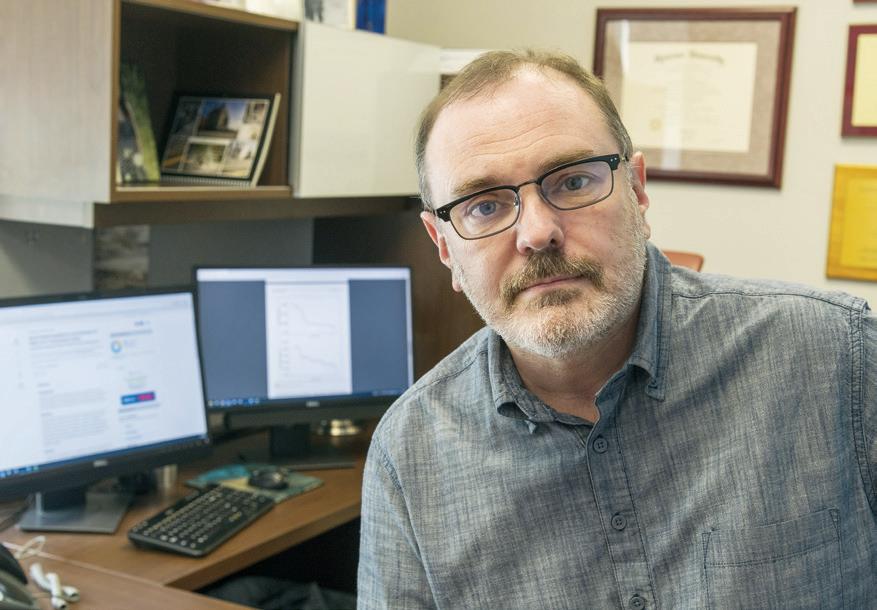
Morley is recognized as a leading medical social scientist with principal interests in health disparities, health workforce development and medical education, health communication and cancer prevention, and several other areas, in addition to conducting surveillance of COVID-19 and other respiratory infectious diseases.
In addition to his faculty appointment as a professor of public health and preventive medicine, Morley also holds appointments in family medicine, and in psychiatry and behavioral sciences.

FRATERNAL BONDS. On February 24, 2024, the Tau Chapter of Phi Delta Epsilon was rechartered at the Upstate Medical University Norton College of Medicine, an effort led by founding members Brendan Maloney ’26, Bridgette Nixon ’26, Dan Mahoney ’26, Febronia Mansour ’26, and Andrew Williams ’26. Phi Delta Epsilon is an inclusive medical fraternity with a mission to develop physicians of integrity who positively impact the world, inspire others to greatness, and lead by example. Originally chartered at the College of Medicine in 1919, the chapter fell inactive and eventually disbanded. In the first three months of its reorganization, members have held two fundraisers, raising money to support the chapter, donating $1,000 to Upstate Golisano Children’s Hospital, and delivering more than 300 CandyGrams Care packages for patients. In addition, the organization hosted a food and clothing drive in collaboration with the pre-medical New York Nu Chapter at Syracuse University and donated collected items to Vera House and the Salvation Army. The current executive board includes Estelle Khairallah ’27, Ché White ’27, Nyaari Kothiya ’27, Estee Wu ’27, and Tara Patale ’27.

Sherard Tatum, MD, professor of otolaryngology–head and neck surgery and professor of pediatrics, was installed as president of the 2,200-member American Academy of Facial Plastic and Reconstructive Surgery (AAFPRS) and its Educational and Research Foundation on October 28, 2023.
The Educational and Research Foundation supports education, research, and humanitarian efforts, most notably, Face to Face. The program that provides lowto no-cost surgical procedures to children abroad with facial deformities, domestic violence survivors in the United States, and veterans and active-duty military members who were injured while serving in the United States Armed Forces.
Tatum has been a member of the Upstate faculty for more than 30 years serving on numerous committees,
including the Cancer and Trauma Committees, several chair search committees, the Medical Student Advisor Program, and as a scientific reviewer for the Institutional Review Board. He has been included on many top doctor lists through the years, including Best Doctors in America, America’s Best Physicians, and America’s Top Plastic Surgeons, among others.
He earned his medical degree from the University of South Florida in 1985 and did postgraduate training in general surgery and otolaryngology at Eastern Virginia Medical School; craniomaxillofacial surgery at University of Eppendorf, Hamburg, Germany; and facial plastic and reconstructive surgery at University of California-Davis Medical Center.
Nneka Onwumere, a third-year student in the Norton College of Medicine, has been awarded a New York Senate Commendation by State Sen. Rachel May in recognition of Onwumere’s organization of the area’s first brain cancer research walk.
The Central New York Walk for Brain Cancer Research at Upstate was first held May 8, 2022, and again on May 21, 2023. Money raised by the walk benefits Debbie’s Brain Cancer Research Fund within the Upstate Foundation.
May recognized Onwumere for coordinating the walk while juggling the demanding requirements of being a medical student. “When someone can do remarkable volunteer intervention in the community, that is pretty incredible,” May said. “We are here to recognize her for being who she is, and for being able to raise awareness of brain cancer and the need for more research in this area.”

Upstate medical student Nneka Onwumere ’25 receives a New York Senate Commendation for her brain cancer advocacy work. Flanking her are State Sen. Rachel May and Upstate President Mantosh Dewan, MD.
Onwumere held the inaugural walk on Mother’s Day in tribute to her mother, Elsweta Gordon, who helped spark her interest in the field of neurology and whose health issues solidified her resolve to become a doctor.
“My mother’s experience reminded me of what I could be,” Onwumere says. “It reminded me of what I should be trying to do. It reminded me that I could possibly make a difference instead of giving up. I am very grateful Upstate gave me a chance.”
SUNY Upstate Medical University became the first campus in the SUNY system to provide an on-campus access point for birth control with an emergency contraceptive vending machine. Installation of the vending machine on campus, which is located on the first floor of Upstate’s Health Sciences Library, was spearheaded by third-year medical students Serena Schmitt and Olivia Preston.
Schmitt and Preston worked with the New York Birth Control Access Project (NYBCAP), a nonprofit organization that works to combat disparities in contraceptive access. The vending machine carries boxes of My Way, a 1.5 mg levonorgestrel tablet, along with pregnancy tests, acetaminophen, Advil, and Benadryl. The vending machine also includes QR codes that link to Upstate’s student health portal and information about emergency contraception from the World Health Organization.
The vending machine sells the emergency contraceptive for $10, much lower than the $30 to $60 average cost at a pharmacy. “We believe that this is an equity issue because price and affordability can be a barrier to access to contraception,” said Rochelle Rodney, the codirector of the New York Birth Control Access Project.
To bring the vending machines to Upstate, Schmitt and Preston joined the associate board at NYBCAP in 2022, where they learned how to implement the project. From there, they proposed the project to Upstate administration and collected more than 200 signatures from students to demonstrate interest.
“When we started getting signatures of support from our peers, it became clear this was a service that students at SUNY Upstate wanted,” Preston says. “This project is a great way to not only increase access on
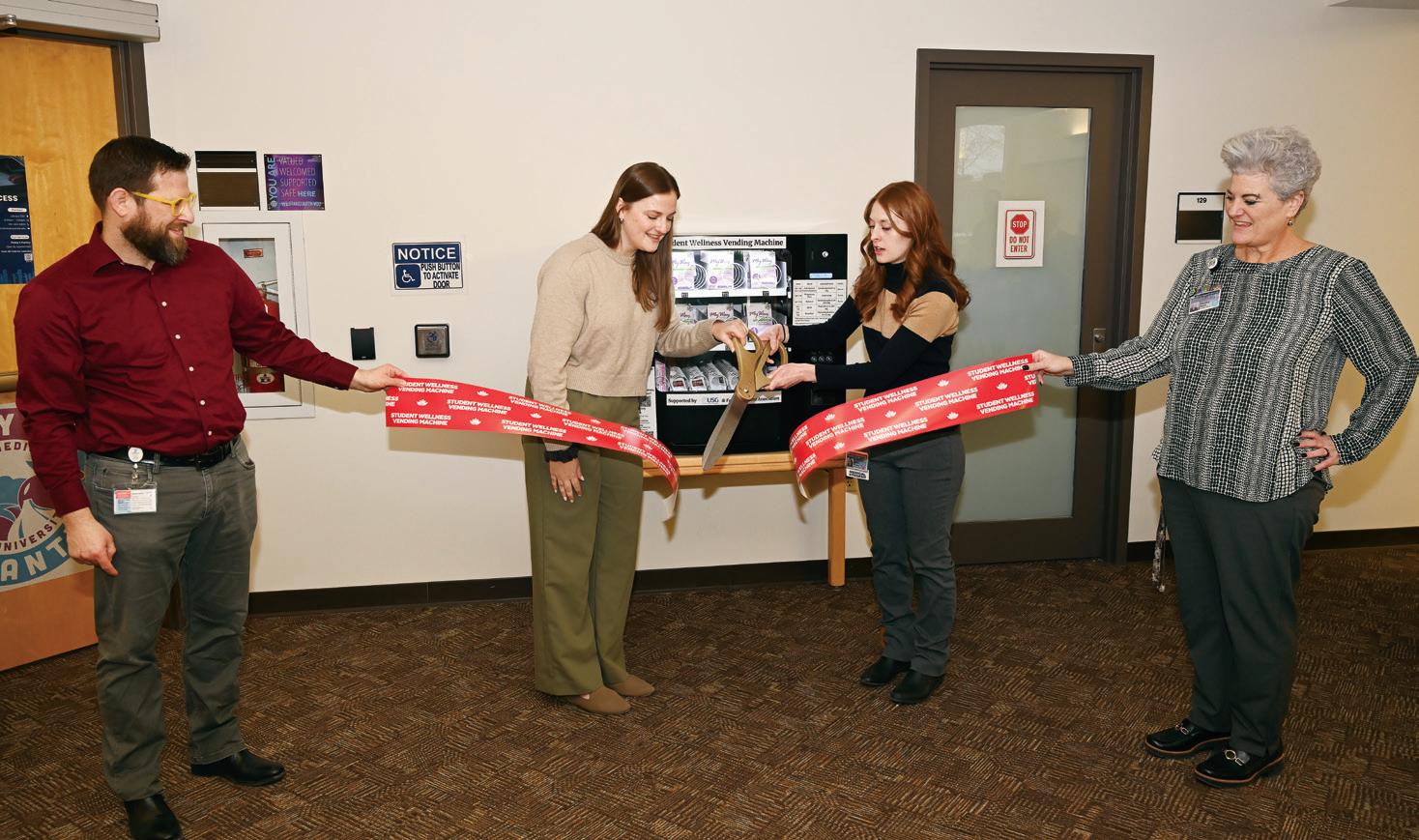
campus to emergency contraception, but also to help normalize talking about reproductive health.”

The vending machine was soft-launched in December 2023 and officially opened at a ribbon-cutting ceremony on January 18, 2024. Schmitt hopes that Upstate can serve as an example for other SUNY schools across the state to implement emergency contraceptive vending machines in the future.
“We’re the first SUNY school to do this,” she says. “Hopefully, more SUNY schools will follow suit and we’ll take the lead and show them how we did it and how they can do it too.”

JANICE P. NIMURA, author of The Doctors Blackwell, a finalist for the 2022 Pulitzer Prize in biography, visited Upstate Medical University on February 7, 2024, for Elizabeth Blackwell Day, which commemorates the anniversary of Blackwell earning her medical degree from what is now Upstate Medical University. “She really believed that by proving to the public what a woman could do, she would help to change the way women felt about themselves and thereby unleash the potential of women and raise humanity to a new level,” said Nimura of Elizabeth Blackwell, MD, in her public lecture. Nimura signed books following the lecture.

BANNERS depicting notable women physicians were installed on the light poles throughout the Weiskotten Hall courtyard as Upstate celebrates 2024 as the 175th anniversary of Elizabeth Blackwell’s graduation from medical school and Upstate becoming the first coed medical school in the country.

The 23rd edition of Upstate Medical University’s journal of literary and visual arts, The Healing Muse, features the work of Upstate physician Jaclyn Sisskind, MD ’09, HS ’12, and Upstate medical students Abha Japi ’26 and Katie Farkouh ’25, selected out of more than 1,000 submissions from around the globe.
Published by Upstate’s Center for Bioethics and Humanities, The Healing Muse features fiction, poetry, narratives, essays, memoirs, and visual art, typically focused on themes of medicine, illness, disability, and healing.
“My goal is to provide a space for quiet reflection,” says editor Deirdre Neilen, PhD, associate professor of bioethics and humanities. “That’s what writing does for the writer. And then that’s what writing does for the reader.”
Both Dr. Sisskind, a pediatrician, and Japi, a second-year medical student, are the recipients of Dearing Writing Awards, a competition open to all Upstate students and employees. Sisskind won for her poem “Apart” and Japi won for her poem “We’ll Laugh Until Our Ribs Get Tough.”
Japi grew up as an avid reader who always kept a journal and did both creative writing and journalism in high school. Now her goal is to combine literature and writing with medicine.
Farkouh, who had her poem “Ego” published in this year’s edition, also journals regularly to help deal with the stress of medical school. The poem is her first published piece.
“It is absolutely crucial to find time to pursue your hobbies during medical school,” she said. “While we all love medicine, we need a balance in our lives, so must be intentional about making time to explore other hobbies and outlets.”
To purchase a copy of The Healing Muse go to: thehealingmuse.org

More than 75 first- and second-year medical students had the opportunity to network with faculty members and Central New York physicians representing a full array of medical specialties at the annual Career Advisory Dinner, sponsored by the Upstate Medical Alumni Foundation on January 8, 2024.
Over a casual meal held in the New Academic Building, students were able to rotate among tables representing different specialties to speak with physicians practicing in those fields. Forty-two physicians volunteered to participate in the event, sharing their experience and career advice regarding their respective specialties.
“Our students are very appreciative to have the opportunity for direct interaction with physicians practicing in fields they are interested in outside of an academic or shadowing environment,” says Paul Norcross, executive director of the Upstate Medical Alumni Foundation. “We are thankful to our alumni and faculty who volunteer their time to help guide our students.”
To learn more, visit medalumni.upstate.edu/career-mentor.


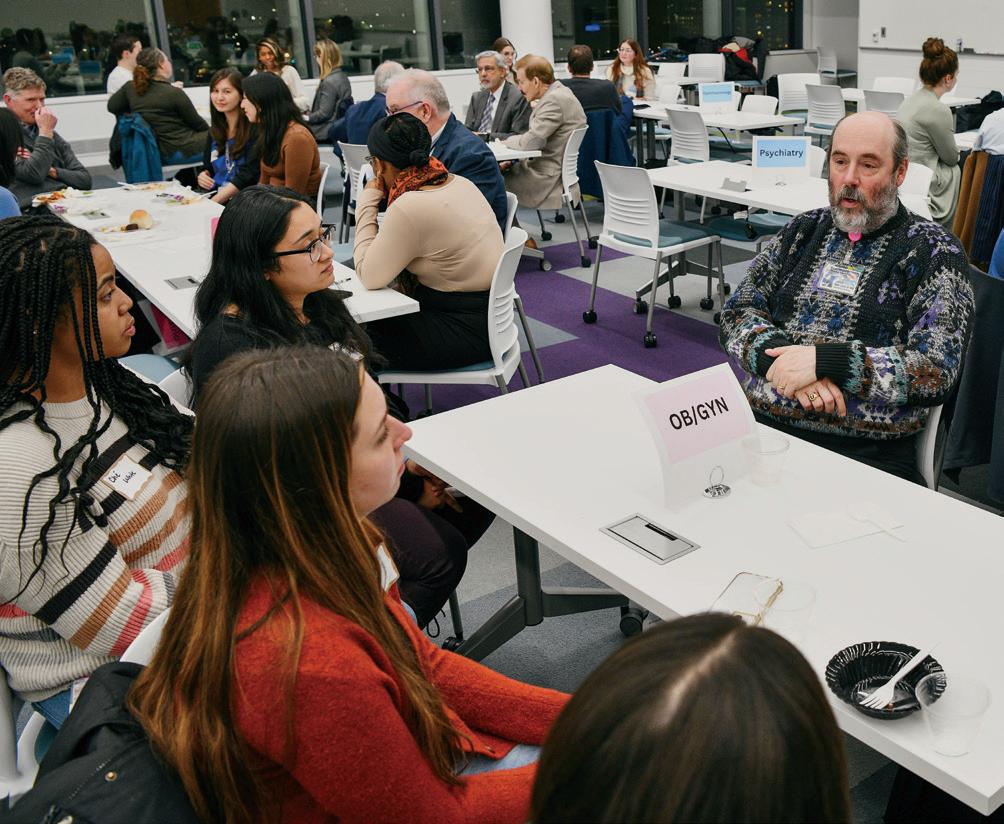
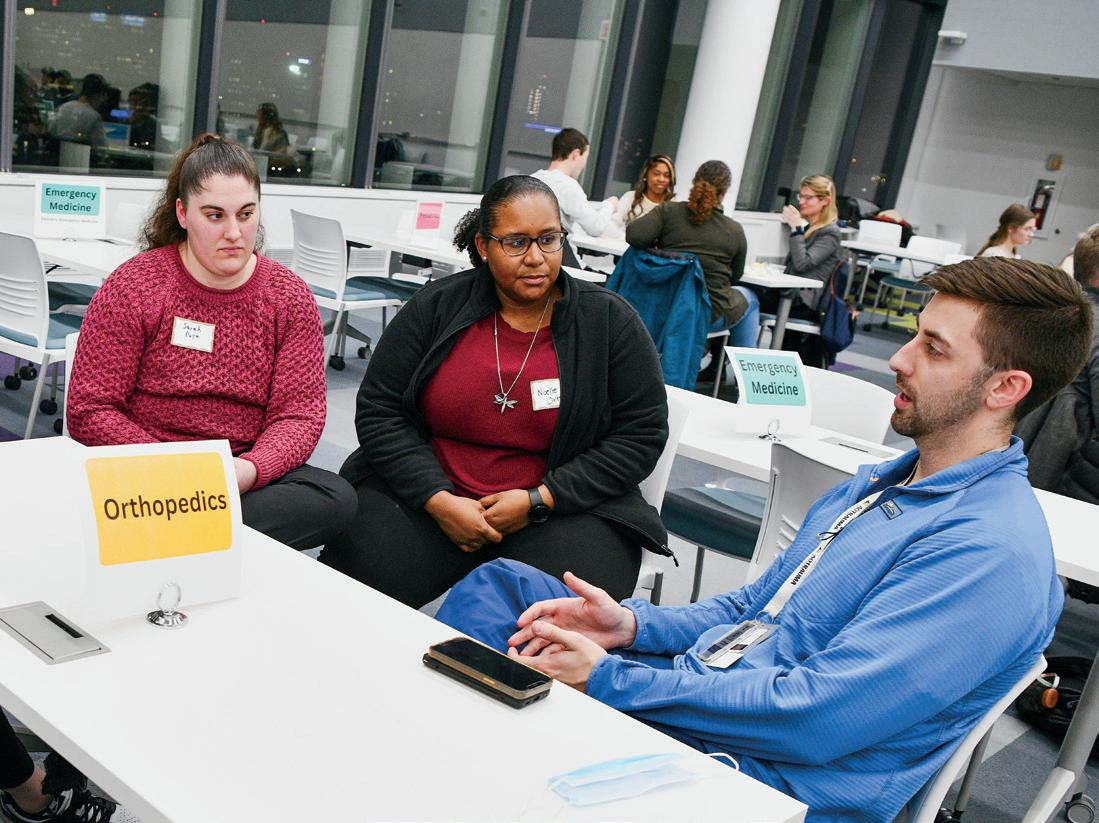

After I graduated college, I worked as a medical interpreter at a clinic along Atlanta’s Buford Highway corridor.
I spent my days speaking Spanish with patients, nearly all of whom came from low-income communities. Many had trouble understanding their mostly white doctors due to language barriers and cultural differences. Some patients even lived in fear of immigration authorities. I recall one family who worried that seeking treatment for their little girl’s third-degree burns would result in a call to ICE.
I was 22 at the time and already passionate about medicine. After my time there, I felt reassured that I wanted to devote my career toward healing the most vulnerable Georgians. Only then did I discover that my own immigration status stood in the way.
My mom brought me to Georgia from Guatemala when I was 6 years old, escaping an abusive relationship and seeking better opportunities. Though undocumented, I grew up feeling just as American as my peers, and I initially hoped to serve in the Navy. I soon realized that my immigration status—something I had no control over—prohibited me from enlisting or attaining the naval scholarship I had been promised as a top Navy junior ROTC cadet in my region.
At 18, I was overjoyed to receive work authorization and protection through the Deferred Action for Childhood Arrivals (DACA) program. At the same time, however, I was shocked to learn that Georgia’s licensure requirements prohibited undocumented individuals, including those with DACA, from practicing medicine. I was forced to pursue my medical career in New York,
one of roughly 15 other states that have enacted legislation to allow DACA recipients to obtain a medical license. That’s a huge disappointment for me and my undocumented peers who hope to study medicine and provide care to underserved communities in Georgia. But it’s also a tremendous loss for our state, which desperately needs as many doctors as we can get.
Georgia’s healthcare shortage is well documented. Nearly every county in the state—156 out of 159—lacks enough health professionals to meet the health needs of its population. Specifically, a third of Georgians, or 3.3 million people, live in an area with a shortage of primary care physicians, my intended specialty.
Medicine isn’t the only area where Georgia sees undocumented people as a “problem.” I have long faced barriers to my education and professional dreams. I was in my high school’s gifted program, but my junior year, I discovered the University System of Georgia Board of Regents had banned undocumented students from admission to the state’s public universities. Yet nearly all other states—47 total—allow undocumented students to attend public college.
I was fortunate to be accepted into Mary Baldwin University, a private college in Virginia, on a full academic scholarship and led the only all-female cadet corps in the United States. My lifelong aspiration to become a physician was rooted in my upbringing, but I gained more awareness of the need for diverse healthcare professionals through my stint as a medical interpreter. My siblings and I grew up never visiting a doctor due to my mother’s deportation fears. I still remember the anxiety we felt every time there was an unexpected knock on our door. I knew that saying the

wrong thing to the wrong person could end up tearing our family apart. Growing up this way has given me deep empathy for my patients and the hardships they face beyond their medical diagnoses. I know all too well how difficult it can be to simply show up to a doctor’s appointment.
After college, I knew that gaining admission into medical schools in Georgia would be an uphill battle as most require citizenship. Instead, I earned a master of public health from Johns Hopkins University and then was thrilled to be accepted into medical school at SUNY Upstate Medical University in Syracuse, New York. Now in my second year, I still hope to become a family medicine doctor in a state that allows DACA recipients to practice.
For Georgia, excluding individuals who are both qualified and eager to make meaningful contributions to their communities is a missed opportunity. With many states facing shortages of healthcare workers, I know my skills, education, and training will be put to good use elsewhere. In the meantime, I continue to hope for change—that one day I’ll be a full citizen of this country and able to practice medicine back in my home state, treating the Georgians who need me most. It’s time we recognize that Dreamers are not a political problem. We are a solution, and our leaders should see us as such.
Adapted and reprinted with permission from GlobalAtlanta.com.
Second-year Upstate medical student Katherine Narvaez Mena in the Weiskotten Hall CourtyardFrom early diagnosis and treatment to equity in clinical trials, Sharon Brangman, MD ’81, has led efforts to help aging patients and families navigate dementia at Upstate and beyond.
Sharon Brangman, MD ’81, was at an international Alzheimer’s conference listening to a presentation about promising findings from a recent clinical trial about a new drug to remove amyloid plaques from the brain. But it was difficult to feel excited. When she looked at the research pool, she saw that most of the subjects studied in the international trial were white males; the trial included only 19 Blacks and a small number of Asians.
“That is completely unacceptable when Alzheimer’s disease has a significant impact on African Americans and Latinos, but they are not represented in the clinical trials,” says Dr. Brangman, Distinguished Service Professor, and chair of the Department of Geriatrics at Upstate.
But it’s not unusual. According to a 2022 report, the National Academies of Science, Engineering and Medicine acknowledges lack of representation in clinical trials as a contributing factor in health disparities in the United States. While gender representation has improved over
the last decade, participation of Blacks, Latinos, Asians and other ethnic groups in clinical research and trials remains low, undermining knowledge about the efficacy of new treatments and medications on those populations.
Brangman’s frustration led to action. Together with a colleague at the Icahn School of Medicine at Mount Sinai, she wrote a grant proposal to fund a program to increase diversity in clinical trials at Upstate’s Center of Excellence for Alzheimer’s Disease (CEAD), which she directs.
That $372,000 grant from the National Institute of Aging funded Upstate’s Equity Research Core (ERC). Housed in the Department of Geriatrics, the unit was created in 2022 to develop a community-based program to increase diversity in Alzheimer’s drug trials at Upstate.
“Our goal was to create community outreach to develop trusting relationships with people so that they are open to the idea of participating in research,” says Brangman.
Not only was that program successful— achieving 25 percent Black participation in


several trials—the program is now self-sustaining, having branched out to replicate its diverse recruitment efforts in trials for other institutions and pharmaceutical companies nationwide.
“We are working hard to try to crack this horrible disease,” says Brangman. “Science has done a lot with the heart and other parts of the body, and the brain is the final frontier. It is going to be hard to find one thing that makes this disease better. We are starting to learn it is going to be a layered process.”
Brangman discovered her interest in working with older adults by accident early in her career. As a young internist working in the South Bronx to pay off her National Health Service Corps obligation, she observed that her younger patients were often “looking for a doctor’s note to stay home,” while her older patients wanted to do whatever they could to stay active and independent, even though many of them had serious health issues.
“I was drawn to these older people who had so many illnesses but still wanted to do things for themselves,” she says.
Brangman applied for a fellowship program in geriatric medicine at Montefiore Medical Center that was only in its second year. When she joined the Upstate Department of Medicine a few years later, in 1989, the field of geriatrics was still in its infancy and faced resistance from general practitioners who felt they already took good care of older adults.
But Brangman was undeterred. She knew she could
make a difference in the way older adults received medical care, which often involves managing multiple medical concerns and multiple medications as well as social issues, such as the ability to maintain independence and stay in one’s home for as long as possible.
“I was able to work hard and create a lot of the pieces that are here today,” she says.
That’s an understatement. Over the last 35 years,
Brangman has nearly single-handedly built the worldclass geriatric care offered at Upstate Medical University—taking geriatric medicine from a division within the Department of Medicine to its own robust department (she’s the founding chair); founding and directing the Geriatric Medicine Fellowship Program; and establishing and growing the Central New York Alzheimer’s Disease Assistance Center to its designation as a New York State CEAD.
At the same time, she’s established herself as one of the nation’s leading geriatricians and advocates for senior citizen health, serving as president of the American Geriatrics Society from 2010-11 and chair of its board from 2011-12. She is currently a trustee of the McKnight Brain Research Foundation, the nation’s only private foundation dedicated exclusively to solving the mysteries of the aging brain and helping people achieve a lifetime of cognitive health.
Brangman’s interest in helping older patients led her naturally to study the diseases primarily associated with aging: Alzheimer’s and other forms of dementia. That work received a boost in 2015 when the New York State Department of Health designated Upstate Medical
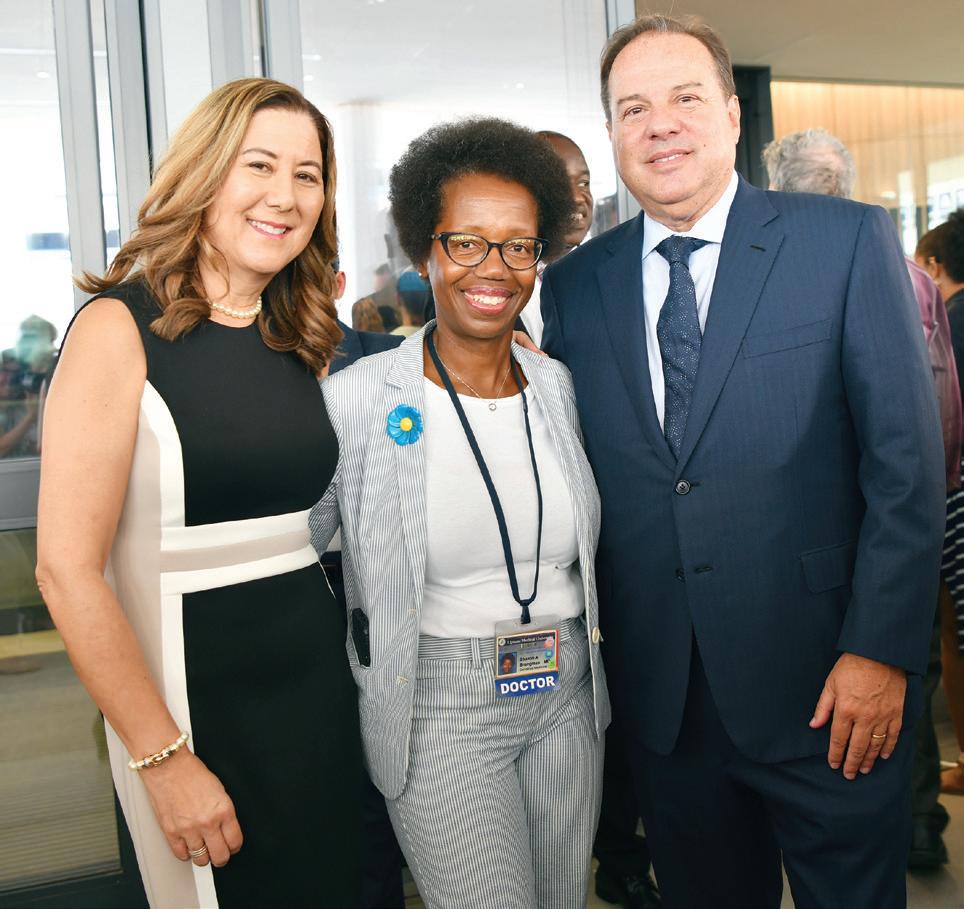 Dr. Brangman speaks at a press conference announcing the grant that supported creation of the Equity Research Core.
Dr. Brangman speaks at a press conference announcing the grant that supported creation of the Equity Research Core.
“Science has done a lot with the heart and other parts of the body, and the brain is the final frontier. It is going to be hard to find one thing that makes this disease better. We are starting to learn it is going to be a layered process.”
University as a CEAD, which came with $2.35 million in initial state funding to expand its efforts.
Brangman says the CEAD designation has allowed Upstate to set standards for care. “We are the only center in the region that offers this sort of comprehensive evaluation, management, treatment and caregiver support for Alzheimer’s disease and other dementias, including Lewy body dementia, frontal temporal dementia, vascular dementia, and Parkinson’s disease,” she says.
A second boost came two years later when Upstate received an $8-million gift from Sam and Carol Nappi to fund the Nappi Wellness Institute, with part of that funding earmarked toward Alzheimer’s and brain research in thanks for care the Department of Geriatrics had given to family members through the years. In 2017, the Upstate CEAD launched an Alzheimer’s clinical research program. “Prior to this, people had to travel to Boston or New York City to participate in clinical trials, which is a big stressor if you’re already dealing with dementia,” says Brangman. “We’re now able to offer people in our area the opportunity to participate in clinical trials for cutting-edge novel medications that are in the pipeline.”
As of March 2024, the CEAD had six active trials and four more upcoming, all in partnership with either pharmaceutical companies, the National Institute of Health, or both. “There are many patients who want to contribute to new discovery,” says Brangman. “They almost universally say that they want to make an impact on this disease so that their grandkids don’t have to suffer with it.”
While there is no cure for Alzheimer’s, many drugs under study are believed to slow progression of the disease and offer patients an opportunity to get the benefits of a medicine that will be approved in a few years sooner rather than later.
“Patients join these studies and give their time knowing that it may not help them or their loved one, but that it may help someone in the future with this devastating disease,” says Colleen Dillenbeck, manager of clinical trials. “They are helping us find better treatments and hopefully someday a cure.”
But simply filling the trials isn’t enough. Diversity in clinical research is crucial. If drug trials only include participants from a narrow demographic group, the results may not accurately represent the broader population.
In 2022, the FDA laid out new requirements for diversity recruitment plans in clinical trials for any new drugs or devices requiring the agency’s approval.
But the Department of Geriatrics was ahead of the game. Due to Brangman’s initiative, the ERC was established specifically to address the systemic gap in medical research. Part of that mission is to understand potential barriers to the recruitment and retention of diverse populations in research and to develop strategies to overcome those barriers.
Brangman recruited Kathy Royal, MS, to take on the role of community research liaison. Royal, who has decades of human services experience and

deep ties to Syracuse community organizations, serves as a bridge between medical researchers and the community members who might benefit from that research, working to dispel long-held mistrust of medical research based on historical abuses.
“My job is to go into the black and brown community—my community—to educate and motivate community members about the importance of participating in research because we are needed to make sure medications are made using our input,” Royal says.
The second aspect of the ERC is the Community Research Recruitment Accelerator (CRRA), a multistakeholder panel that includes Upstate clinicians and researchers and community organization leaders who serve as community advocates. The CRRA works in an ongoing advisory capacity to researchers on effective methods for recruiting and retaining diverse participants in specific studies.
Their expertise is not limited to Alzheimer’s research. “We offer our services to any department at Upstate conducting clinical trials and also work with other institutions and pharmaceutical companies who want help diversifying their trials,” says Sarah McNamara, certified project manager in the Department of Geriatrics. “Most organizations reach out to us in the grant stage when they’re writing about their research methods and diversity plan and looking for guidance in relation to the new FDA guidelines. We also help with communication and marketing to help recruit diverse participation.”
In addition to medical research, ERC has worked with researchers at Syracuse University to improve diverse recruitment and prevention protocols in their grant applications. Royal’s work helped researchers at Cornell significantly increase the diversity in one of their projects and her role has been replicated by a research group in Pennsylvania.
Brangman has published on the ERC’s methodology and successes in the Journal of the American Geriatrics Society and presented about it at national meetings, drawing interest in the model.
“Everybody recognizes that most drugs developed in this country are produced using clinical trials that are not inclusive,” says McNamara. “We’ve become a national resource that just happens to live at Upstate Geriatrics.”
Brangman wants to make sure the CEAD is a resource for the entire region it serves.
“Part of what we do is help people differentiate normal aging from what might be the signs of a disease process. If it is signs of a disease process, we can determine steps to intervene to maybe slow it down or just to
help that person have the highest quality of life for as long as possible,” she says.
In collaboration with Syracuse University, the Department of Geriatrics recently completed a one-year pilot project to evaluate the effectiveness of a community-based approach to screening older adults for cognitive impairment. The project integrated a cognitive screening tool—the Mini Cog—into the regular home visits of a Neighborhood Advisor with adults aged 65 and older in Syracuse neighborhoods with high concentrations of poverty and high proportions of older adults.
The Mini-Cog is a simple five-minute assessment validated to increase the detection of cognitive issues.
“We have been very excited about this project as it gave us the opportunity to identify those who may have an early dementia in the community before they are in a crisis situation,” says Brangman. “Early identification of a serious memory problem allows us to develop a care plan to help the older adult remain independent and enjoy a high quality of life for as long as possible.”
Now, Brangman is expanding that program into rural areas of the CEAD’s coverage area. “Many of the patients in these rural areas don’t have the same access to care—a lot of smaller hospitals have closed or there’s no MRI machine,” she says.
In March, the Department of Geriatrics was awarded $295,000 from the New York State Health Foundation and the Health Foundation of Western and Central NY to embed early screening detection of cognitive impairment like Alzheimer’s and other dementias into New York State Offices for Aging/Aging Services System. This two-year project will expand a model for comprehensive screenings and referrals into seven counties throughout Central New York. “What we’ve found is that many people working with older adults see these problems, but they don’t know what to do as a next step,” she says. “We want to train them so that people get referred to our office before they’re in a crisis state.”
The program is yet another effort to meet an unmet need. In 2016, Brangman created the Sharon A. Brangman, MD ’81 Geriatric Scholarship with the Upstate Medical Alumni Foundation, which supports Upstate medical students interested in the field of geriatrics. “There’s almost an unending need for our services,” she says.
And Brangman continues to grow the department, which recruited an additional physician and nurse practitioner last year and will add three more physicians by summer 2024.
“The more hands we have on deck, the more we can offer to help older adults throughout the continuum of aging—from home, to outpatient, to hospital, to nursing home, and new discovery through clinical trials.”
Clinician scientist Jacob Dubroff, MD/PhD ’06, uses nuclear medicine imaging to decode the molecular mechanism of disease.
BY RENÉE GEARHART LEVY
It’s well-established that smoking cigarettes causes lung cancer. Many people who want to quit their cigarette habit turn to e-cigarettes, believing that vaping is less harmful. But research by Jacob Dubroff, MD/PhD ’06, published last year in the Journal of Nuclear Medicine showed that e-cigarette users have greater lung inflammation than cigarette smokers and non-smokers, a unique inflammatory response that is different from cigarette smoking in younger, otherwise healthy individuals.
“It’s a different beast altogether in terms of the inflammation happening inside the body,” says Dr. Dubroff, a nuclear medicine specialist at the University of Pennsylvania Perelman School of Medicine and senior author on the study. “I fully expected the cigarette smokers to have more inflammation than anyone else.”
In the first of its kind study, Dubroff used Positron Emission Tomography (PET) utilizing a novel radiotracer to compare lung inflammation between cigarette and e-cigarette users and a control group who had never smoked or vaped. “Inflammation in the lungs is difficult to identify early, and particularly to measure and to compare different types of behaviors,” he says of the technology used. “The findings suggest molecular imaging may be uniquely poised to detect and measure the potential pathophysiologic harms associated with e-cigarettes, which have been touted as a safer vehicle for nicotine compared to traditional combustible cigarettes.”
The idea for the study was germinated by earlier research using PET/CT to study brain receptor activity in cigarette smokers.
“Between the decriminalization of marijuana and the increase in vaping, it became more challenging to find people who only smoked cigarettes,” Dubroff says.
With studies reporting that up to 40 percent of teenagers have tried e-cigarettes—and with two teenaged sons of his own—Dubroff became interested in studying the effects of vaping. He found a clinical partner, psychologist Reagan Wetherill, PhD, who was interested in the behavioral aspect, and received support for the pilot study from the National Institute of Drug Abuse, the National Heart, Lung, and Blood Institute.
“We know that e-cigarette usage has increased dramatically, particularly among
“We know that e-cigarette usage has increased dramatically, particularly among adolescents and young adults. This could be a new population of patients that get cancer or other types of lung disease 20 years from now. We don’t know, because we don’t have the years of evidence on this behavior like we do with combustible cigarettes.”
— JACOB DUBROFF, MD/PHD ’06
adolescents and young adults. This could be a new population of patients that get cancer or other types of lung disease 20 years from now,” he says. “We don’t know, because we don’t have the years of evidence on this behavior like we do with combustible cigarettes.”
Dubroff has also conducted brain scans of e-cigarette and combustible cigarette users, unpublished research he’s also excited about. “We’re getting some really interesting insights,” he says.
As a clinician scientist, Dubroff splits his time between patient testing—conducting nuclear stress tests, oncology scans, neuroscience imaging, and scans to detect infection—and research. Dubroff uses PET to better understand the molecular mechanisms behind conditions ranging from nicotine addiction and opioid use disorder to neurodegenerative diseases such as Alzheimer’s and Parkinson’s. His many publications include articles on imaging in addiction, cardiac sarcoidosis, pulmonary embolism in pregnancy, and various forms of dementia, among others.
“It’s an exciting field making incredible advances with the continued development of more sensitive instrumentation that allows us to see smaller things that may have escaped us previously,” he says. “There’s always something new coming down the pipe.”

Dubroff’s first hands-on exposure with medical research began in the lab of Charles Hodge, MD, HS ’74, former chair of the Department of Neurosurgery at Upstate Medical University. Dr. Hodge was a friend of Dubroff’s father, Lewis Dubroff, MD, PhD, a Syracuse dermatologist. The younger Dubroff had just finished his first year as a biomedical engineering major at the University of Pennsylvania, and Hodge needed assistance with research using the new field of functional MRI technology (fMRI).
Hodge was conducting human studies using fMRI and Dubroff learned to process the complicated data from the brain imaging. “It was really neat to be doing that as an undergraduate,” he says. “I don’t know if that could even happen today.”
The experience of working in Hodge’s lab— which he did for three summers—had a profound impact. Being immersed in the research environment made Dubroff realize that understanding how research ideas develop was an important aspect in thinking about science.
As a result, he picked up a second undergraduate major in the history and sociology of science at Penn’s College of Arts and Sciences. He also began working on fMRI research at Children’s Hospital of Philadelphia. “I used to scan my friends,” he says.
Dubroff became more interested in medical research and its clinical applications than in engineering. His father had earned an MD/PhD, and although he had not conducted research in many years, felt his clinical work benefited from that scientific foundation. Dubroff enrolled in Upstate’s MD/PhD program, where Hodge continued as a mentor. He completed his PhD in neuroscience, focusing his dissertation on brain plasticity under thesis advisor James McCasland, PhD, professor emeritus of neurobiology.
Although fascinated by the brain, Dubroff wasn’t sure of his clinical direction. Neither neurosurgery or neurology seemed the right fit. And while he had imaging experience, radiology wasn’t quite right either. “The people were really smart, but they weren’t interested in the same kinds of questions I was,” he recalls.
Dubroff spent a lot of time down in the stacks in the basement of the Health Sciences Library, reading papers and journal articles. “I started reading about nuclear medicine and this new modality called PET/CT used for brain imaging that was just coming out,” he recalls. “I wasn’t interested in all areas of radiology, but I was definitely interested in this.”
He wondered if it was possible to only practice nuclear medicine and do research and was lucky to find a residency program at his alma mater, University of Pennsylvania, that would train him to do exactly that.
In the mid-1980s, there were only around 20 PET scanners nationwide and those were largely experimental. With the advent of PET/CT, researchers began redoing imaging trials to determine which modality was most effective. “What they found was that when you put the function of the PET scan on top of the anatomy of the CT scan, the PET/CT, you have a more accurate study,” he says. “It actually changes the staging of a lot of cancers and can change how you manage a patient.”
In other words, PET/CT was revolutionizing the field. As he was finishing his chief residency year, Dubroff had the opportunity to work with Caryn Lerman, PhD, emeritus professor of psychiatry at Penn and current director of the University of Southern California Norris Comprehensive Cancer Center, who was doing research on smoking behavior and needed a research partner to do imaging studies of the brain.
Although he hadn’t previously worked in the area of addiction, Dubroff recognized smoking-related cancers as leading killers that were preventable. The prospect of a study that could impact that—and involved brain activity—was appealing.
Lerman had found that people metabolize nicotine at different rates, largely through a pathway in the liver. People who metabolize nicotine more slowly were also more successful at quitting smoking. Now she and Dubroff wanted to see what role brain receptors for nicotine played.
“We found that people with slower metabolism of nicotine—those most likely to be able to quit—also had fewer brain receptors available in the imaging studies,” he says. “Perhaps the

“We found that people with slower metabolism of nicotine—those most likely to be able to quit—also had fewer brain receptors available in the imaging studies. Perhaps the reason some smoking cessation therapies work or don’t work is based on genetics and just how well your liver metabolizes nicotine.”
— JACOB DUBROFF, MD/PHD ’06
reason some smoking cessation therapies work or don’t work is based on genetics and just how well your liver metabolizes nicotine.”
Since 2019, Dubroff has been part of the Penn PET Addiction Center of Excellence (PACE), created by psychiatry and radiology researchers to combine clinical research on opioid use disorder with PET neuroimaging in hopes of yielding mechanism-level discoveries for translating basic addiction science to the clinical care of patients suffering from opioid use disorder.
Dubroff says those efforts benefit from continuous advances in the radiochemistry of tracers and in the scanners themselves. “A
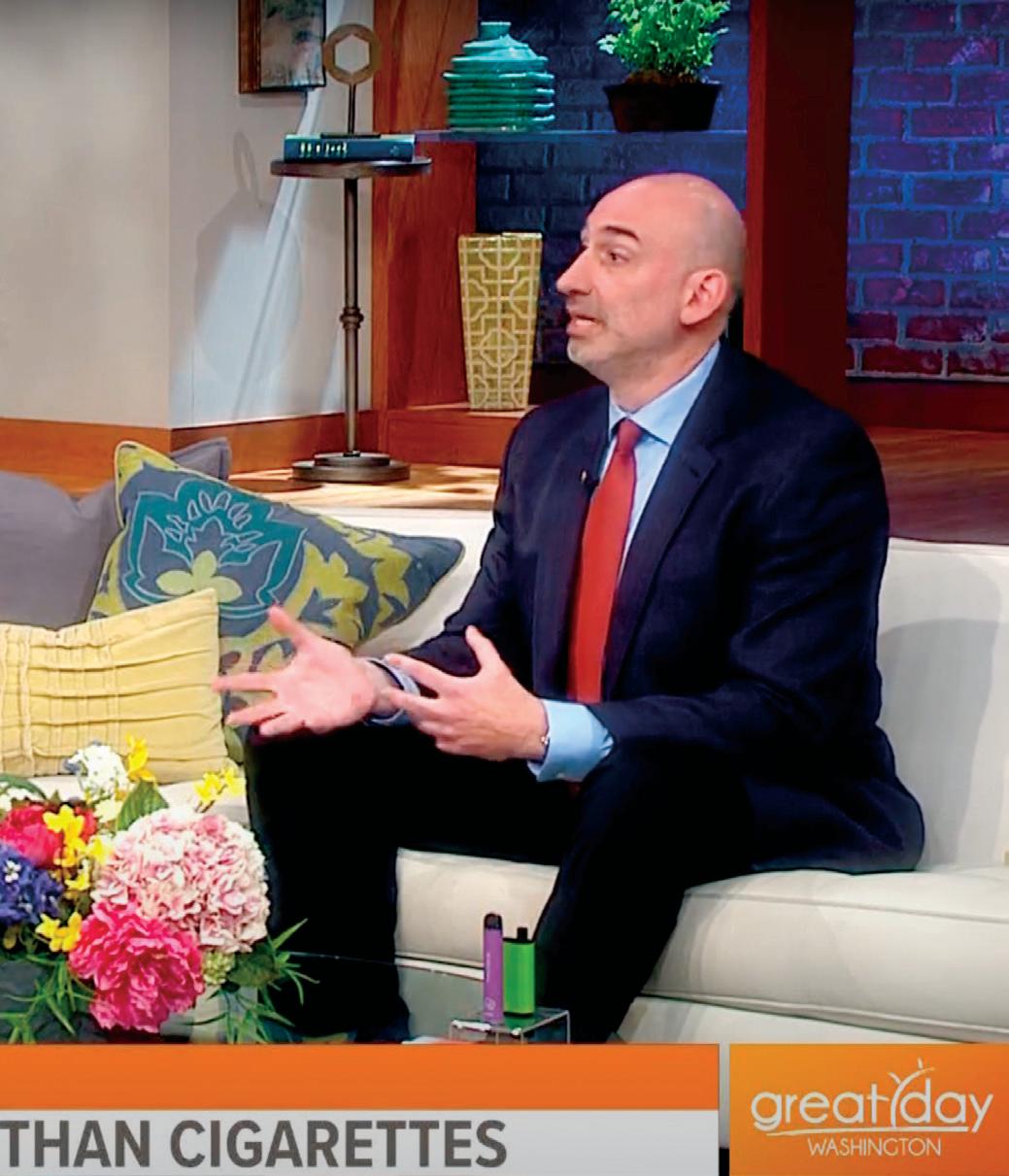
typical PET scanner has a ring of 18-20 inches. We slide the patient through the ring to take different pictures,” he explains. At PACE, Dubroff has access to a whole-body PET machine. “Instead of just looking at one spot and taking the static image, we can do dynamic imaging, acquiring data over time and looking at the whole body at the same time.”
He’s in the process of trying to figure out the best way to use these advancements in imaging and radiochemistry to help curb the epidemic of opioid overdose deaths. “We’re approaching 80,000 deaths annually to opioid overdose, significantly exceeding traffic accidents and many kinds of cancer,” he says.
Dubroff is studying whole-body scans of patients with opiate use disorder who are undergoing medication-assisted therapy, such as buprenorphine, with scans of non-opiate users. “Similar to the way the liver metabolizes nicotine, I’m looking to see whether there may be something physiologically that makes some people respond to opiates differently than others by how they metabolize synthetic opioid,” he says.
At present, there are more questions than answers. “There’s just so much data,” he says. “We’re trying to focus in on identifying what is the really important question that will allow us to understand this disease process. You can only do research if you have money, so we want to have the right question to pitch for funding.”
Dr. Dubroff during a press appearance explaining the results of his e-cigarette study.
When Dubroff is not with a patient, conducting scans, or analyzing data, you might find him on the basketball court. At 6’6, it’s not surprising he gravitated toward the sport growing up. After playing on his high school team, he was able to walk on to the University of Pennsylvania team as an undergrad and continues to play pick-up games with other former players at the historic Palestra, which is only a block from his clinic.
At the Penn School of Medicine, there’s an annual spring faculty vs. medical student basketball game, a tradition Dubroff looks forward to. “I’ve been in that game for over a decade. The medical students stay the same age but each year I’m older,” he says. “It’s a fun, frustrating challenge.”
He enjoys sharing his expertise with medical students, residents, and fellows in nuclear imaging off the court as well. “There’s never a day that I don’t have a trainee in some capacity,” says Dubroff, who was honored as Nuclear Radiology Fellowship Teacher of the Year in 2020.
The biggest selling point for his field: the continuing potential for advancement that keeps things exciting. “Less than two years ago, a new tracer for prostate cancer was approved and was a game changer in terms of how we manage a lot of prostate cancer now,” he says.
And then there’s Alzheimer’s disease. “Ten years ago, a patient suspected of having Alzheimer’s could barely get a PET scan; it was considered experimental,” he says. “Now there’s a test to identify amyloid using PET. It’s commercial and covered by Medicaid, and it’s going to drive who gets what therapy.”
With so many new developments, there’s no room to rest on one’s laurels. “As new tools develop, we gain a better understanding of what’s going on in the body, and that leads directly to better patient care,” he says. “I feel very lucky to be in a place where there’s so much innovation and cooperation in terms of trying to figure out how to take care of patients. It just gets more exciting for me.” 7
A MOCK TUMOR BOARD, DESIGNED BY MEDICAL STUDENT JACQUELYN KNAPP ’24, PROVIDES A MULTIDISCIPLINARY LEARNING EXPERIENCE ON MEDICAL COLLABORATION AND DECISION MAKING.
One patient had adenocarcinoma. Another was diagnosed with squamous cell carcinoma. Because the cases were not straightforward, they were brought to the tumor board, where the radiation oncologist, medical oncologist, surgical oncologist, radiologist, pathologist, and respiratory therapist could sit together to examine the patients’ imaging and test results and develop the best treatment plans to move forward.
In cancer, multidisciplinary tumor boards are weekly forums for providers to discuss the care of their shared patients. In this instance, however, the tumor board was not discussing actual patients, but engaging in a mock exercise staged specifically as a learning experience for second-year medical students at the Norton College of Medicine.
“There is a need to teach medical students how to work collaboratively, and not just within their specialty and only among physicians,” says Jacquelyn Knapp ’24, who organized the mock tumor board held for the first time in December 2023. “This is a model that you don’t necessarily see a lot of in medical practice outside of cancer care in such an organized format.”
She learned that first-hand during an eight-week rotation last summer in radiation oncology, her intended specialty. “There are multiple multidisciplinary tumor boards every week and they’re usually focused on one disease site,” she explains. “We all sit at a round table and discuss every single patient’s case that is either new or not exactly a textbook case.”
Knapp quickly realized how much she was learning from those sessions, both medicine and how to collaborate with medical teammates. Recognizing the fit
“There is a need to teach medical students how to work collaboratively, and not just within their specialty and only among physicians. This is a model that you don’t necessarily see a lot of in medical practice outside of cancer care in such an organized format.”
—JACQUELYN KNAPP ’24
with the growing emphasis on interdisciplinary medical education, she believed the tumor board experience was something other medical students could learn from.
“For decades, the learning pattern for medical students has focused on passively listening to lectures and studying independently on your own,” she says. “My inspiration was to teach students how to work on interdisciplinary teams before they enter the clinical years while also teaching content that could be tested on Step 1.”
Knapp came to medical school with both an undergraduate degree in biology and a master’s degree in biomedical engineering from Cornell University, hoping to find a specialty where she could incorporate her engineering background. She began her third-year clinical rotations without a particular direction.
While rotating in the in-patient
oncology unit, Knapp found herself frequently asked to call radiation oncology for consults. “I had no exposure to radiation oncology and didn’t really understand what it was,” she says. “So, I asked if I could do some shadowing.”
She was immediately drawn to the combination of technology and longitudinal patient care. Thinking she might have found her future specialty, she signed up for a summer rotation in the field. “For me, it was the perfect combination of science, technology and patient care,” she says.
The impact of the tumor boards stuck with her. Knapp spoke with Michael Mix, MD ’11, assistant professor and residency program director of radiation oncology, and Lauren Germain, PhD, director of evaluation, assessment, and research, about designing a learning experience to help prepare medical students for Step 1 using the tumor board as a model.
With support from the Office of Undergraduate Medical Education, Knapp worked with Drs. Mix and Germain to design a session for secondyear medical students based off the thoracic oncology board, incorporating LCME requirements for active learning and interdisciplinary education. “Step 1 includes material on lung cancer, so I wrote sample scenarios based on real lung cancer patients,” she says.
Knapp says the mock tumor board, a required class session for secondyear students, could not have been possible without the participation of actual providers, which included Mix, Michael Archer, DO (surgical oncology), Alina Basnet, MD (medical oncology), Christopher Curtiss, MD ’09 (pathology), Ernest Scalzetti, MD ’86 (radiology), and Theresa Hankin (respiratory therapy).

In the first part of the session, the case was presented and discussed just as would happen in an actual tumor board. “The second-year students observed the first case and saw how all of this happens in real time,” says Knapp, vice president of Alpha Omega Alpha, a member of the Gold Humanism Honor Society, and recipient of the Class of 1966 and the Jack J. Schneider, MD ’66 scholarships from the Upstate Medical Alumni Foundation.
For the second case, however, the classroom was flipped with students figuring out the next steps to take in the patient’s treatment. “It turned into an active learning lesson with the students answering questions similar to those they might see later on Step 1,” she says.
That made an immediate impact on Genevieve McCormack ’26. “It was inspiring seeing how different specialists come together to apply their knowledge to the different facets of a patient’s care,” she says.
“In the classroom, we learn about the histology of lung cancer, about different paraneoplastic syndromes that can arise from different tumor types, and about how to diagnose and treat lung cancer.
Jacquelyn Knapp ’24 with Michael Mix, MD ’11, assistant professor of radiation oncology. After a transitional year, Knapp will return to Upstate for residency in radiation oncology.
But this tumor board showed me how all of these isolated facts fit together, macroscopically.”
It also helped her understand a concept she’d previously struggled with: pleural effusion and its relation to lung cancer. “During the tumor board, the radiologist pointed out a pleural effusion on the patient’s scan and then the oncologist discussed what this indicated in terms of prognosis and how to best manage it,” she says. “Pleural effusion is now burned in my brain forever.”
She’s not alone. In a survey following the session, 96 percent of students reported that they better understood multidisciplinary perspectives on a tumor board and 70 percent reported feeling better prepared for cancer Step 1 content.
“The session allowed us to really apply our knowledge,” says Isaiah Pompo ’26. “We were not regurgitating facts. Instead, we had to collaborate and maneuver gray areas. We had to analyze the risks and benefits associated with each treatment we proceeded with or withheld. A lecture or a study guide can supply us with information, while the tumor board forces us to integrate
and use that information to make high level clinical decisions.”
That’s exactly what Knapp hoped for when she conceived of the exercise, which was held again in April 2024, this time for first-year students. She believes the same format could be used to teach other disciplines and has engaged in discussions with the UME office and course directors about creating additional sessions for other areas of oncology and in non-cancer fields as well.
“This is really a template for how we can teach students how to work as a team and also emphasize clinical relevance,” says Knapp, who is hoping to publish results from the session. “If we can teach medical students how to work with each other and with non-physician providers before they even enter the clinical years, that could really shape how medical students start thinking about the practice of medicine.” 7
September 20•21, 2024
September 20•21, 2024
George (Sandy) A. Lamb, of Portland, OR, served after graduation with Alex Langmuir, MD, MPH, in the Public Health Service before returning to Syracuse to teach at Upstate in the 1960s and early 1970s. He later followed Julius Richmond, MD, from Syracuse to Boston, where he eventually became head of health and hospitals for the city of Boston, playing a key role in fighting the AIDS epidemic. In the early 1990s, Dr. Lamb retired, and he and his wife, Ruth, moved to a remote Adirondack valley where they lived off-grid for 15 years, growing much of their own food and observing nature. They then lived in Queensbury, NY, until March 2023, before moving into the house of their son and his wife, Glenn and Sue Knight of Portland, OR. They now appreciate visits from daughter Bonnie, son Bruce, and his wife, Samia Hasan, and grandkids Raza and Noura. Bruce leads the Stark Neuroscience Institute at Indiana University, where they are making important headway in understanding (and hopefully treating) Alzheimer’s disease. Lamb sends his greetings to classmates and former students.
Julian M. Aroesty, of Scituate, MA, has not yet retired. He enjoys cycling on nice days and continues to review cardiology malpractice cases for the Harvard self-insured program, and doing secondopinion consultations for Teladoc International, sometimes in Spanish when they recognize his Basque family name. “We have moved a few minutes away from grandchildren Hayden Julian (six) and Claire Everly (four),” he writes. “Helping them learn to read and do addition is a joy.”
Carlo R. deRosa, of Placida, FL, writes that he is “ungracefully getting older.”
Howard R. Nankin, of Columbia, SC, shares that he and Jack L. Cohen were friends in Brooklyn, NY, until the end of sixth grade when one of them moved. They renewed their friendship on the first day of medical school at Upstate in 1957 and in February 2024, they met again in Delray, FL!

Malcolm E. Levine and his wife, Margie, continue to enjoy Palm Beach Gardens, FL, but return to the Hamptons each summer to enjoy their children and grandchildren. “Our grandson Ryan is now engaged to Lindsay and our granddaughter Maddie is engaged to Matt,” he writes. “My interests continue to be golf, bridge, and photography, and recently, I have been exploring the use of AI. I hope my classmates are enjoying their retirement as much as Margie and I are.”
September 20•21, 2024
Edward Burak, of Englewood Cliffs, NJ, sold his imaging center in Milburn in 2020 and now works remotely from his house for Radnet. “I still play tennis and exercise,” he writes. “My son Jarett Burak ’02 is chief of MSK radiology for Radiology Partners and lives in Roslyn, NY. My daughter Sabrina is a special education teacher in Orangeburgh, NY, and lives in Piermont. I have four grandchildren and life is good. My brother George Burak retired from orthopedic practice in Tarrytown, NY, and lives in Edgemont, NY.”
Stanley B. Burns, of New York, NY, holds a new position at the New York University Grossman School of Medicine. In addition to being research professor of medicine and psychiatry, professor of medical humanities and
adjunct professor of OB/ GYN, he is now a lecturer in the Department of Bioethics. Dr. Burns is founder of the Burns Archive, a collection of more than one million historic photographs he has collected. He has written 50 books and more than 1,100 articles, curated more than 100 exhibitions, and consulted on dozens of documentaries and feature films. On February 2, Burns combined his interest in medical humanities, OB/ GYN, and historic photography in a lecture on postmortem photographic history and its use in medicine today. Postmortem memorial photography was a popular cultural tradition in the 19th and early 20th centuries. He has written three texts on the subject and created public awareness of the use of photography in bereavement. His work has influenced decades of artists, filmmakers, and curators. In this lecture, he presented the history of postmortem photography and explains how it has become popular in the obstetrics field, as photographs of stillborn infants has become routine in hospitals around the globe. To learn more watch “The Practice and Evolution of Postmortem-Memorial Photography” from the link at www.burnsarchive.com/ historical-death-memorial
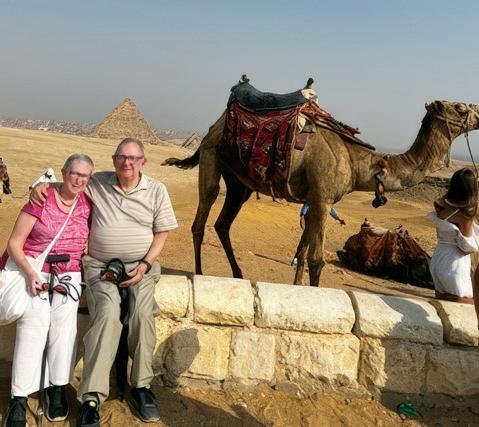
Jack Egnatinsky, of Christiansted, VI, and his wife, Judy, had a wonderful trip to Egypt visiting amazing sites from Luxor to Alexandria. “The Egyptian people were friendly and very respectful and helpful to an old couple of Americans,” he writes.
1966
Neal M. Friedberg, of New York, NY, has been retired for 17 years, married for 57 years, but is still in the fifth grade, per his wife. A. Michael Kaplan, of Delray Beach, FL, is floating back and forth from Delray Beach, FL, to the Massachusetts Berkshires. “All is well,” he writes. “Saw Upstate Medical University this past spring and can’t believe the changes.”
Harold (Hal) C. Burchel, of Pickerington, OH, writes “I’m now 83 and many from my class have gone to their eternal rewards. My second wife, Mary Ellen, and I returned to Kenya for the month of February. We continue to be the stateside directors of our ministry there, called Touch a Life for His Kingdom. Our Kenyan directors are David and Vicky Bainito. We not only evangelize and disciple new converts, but we are
involved in many humanitarian programs. We assist a number of high school students in the slum who could not continue their education because of lack of funds. We feed more than 100 men weekly who work at the dumpsites and listen to a stirring discipleship lesson before they are fed. Ten of these fellows, who were previously sleeping on the ground, have stopped drinking alcohol and using drugs and have been able to rent a room. When this happens, we give them a bed as a reward for their hard work. We were able to rent a lovely ministry center right in the middle of the slum. This is filled daily with young people who are being given a biblical world view and who are being developed into mature, confident, and competent young adults, and who will go out to change their world. I would love to hear from old classmates. My email is: hburchel@gmail.com.”

Robert L. Bard ’68, of New York, NY, presented “Bioenergy Treatment of Inflammation” at the UltraCon Symposium, a global conference held April 6-10 in Austin, TX.
1969
September 20•21, 2024
Gary S. Luckman, of Oakland Park, FL, is a practicing gastroenterologist in Fort Lauderdale, where everybody else goes to retire. “Into my 50th year, I am founder and first president of DigestiveCare, a 50-person, 20-office practice in south Florida. I sold to GastroHealth over 300 GI’s in 10 states. I am now just scoping and playing golf. I am happily married with three kids and four grandchildren. Life is good as long as you have your health.”
John T. McCarthy and Jane Lowinger Falkenstein, of Troy, NY, celebrated two milestones during 2023—their 80th birthdays and their 16th wedding anniversary. “We are looking forward to attending our 55th class reunion in September. We hope Bill Vacek, Jerry Selzer, and Joann Dale will be among the attendees.”
September 20•21, 2024
James H. Brodsky, of Potomac, MD, writes, “Looking forward to our 50th reunion.”
Maria Shevchuk Chaban, of New York, NY, is very much looking forward to her 50th reunion and seeing College of Medicine classmates in September. In 2008, she organized the Urology/GU Surgical Pathology specialty signout division at Weil-Cornell Medical Center, with related resident training and research. She also became chair of the College of American Pathology Committee on in vivo microscopy. This group of technologies renders in vivo intra-procedural histology images comparable to light microscopy. One of these technologies is now widely used in ophthalmology: OCT. The timing of her retirement was fortunate, occurring during the pandemic. She keeps herself busy with art photography, poetry, and her family, which currently includes 11 members.


Charles (Fess) Edwards, of San Diego, CA, finally retired completely on December 29, 2023, at the age of 75, after doing surgery assists for the last five years or so. He is happily married to Noel from Syracuse who continues working for the City of San Diego paramedic service. One son is an anesthesiologist in Bethesda, MD, and

the other a lawyer in San Diego, defending wayward doctors in his administrative medical law practice. Edwards is still very active in his passion for skydiving with plans to attempt another world record in Arizona in March 2024 for skydivers over 70. “I’m also driving up to Los Angeles every once in a while to serve as a background actor/extra,” he writes. “Look real hard for me in the third season of Hacks on MAX. Living life to the fullest and making every day count.”
J. Peter Gregoire, of Romulus, NY, had the wonderful experience of taking four of his five grandchildren and two daughters, on a trip to travel the circumference of Iceland. “We went in June 2023, and experienced nearly 24 hours of daylight,” he writes. “If you can make the trip, we highly recommend it.”
Joseph W. Helak, of Wilmington, NC, officially retired. He enjoys spending time with his five grandchildren, playing piano, singing in a choir and “trying to play” golf.
Vincent M. Waite, of Chelmsford, MA, and his partner, Sheila Morehouse,
MD, are riding their bicycles from Cairo to Cape Town. “After working in Africa for many years, I am now able to visit many of the countries that I could never afford to or had time to visit,” he writes.
Mark W. Zilkoski, of Wolf Point, MT, didn’t like retirement so continues to work a little. “We celebrated my 73rd and Myrle’s 70th birthdays (we share the same birthday) in February. Eight of our nine kids, 11 of the 23 grandkids, and a few

spouses attended,” he writes. “It was my best birthday ever!”
September 20•21, 2024
Ruth H. Hart, of Manlius, NY, brought her credentialed therapy dog, Monty, a wirehaired dachshund, regularly to her Literature in Medicine class during fall semester 2023. “Having never had a dog myself, being able to absorb his moments of joyfulness as he wagged his tail or snug-

gled into me made me feel an added sense of companionship,” shared medical student Christine E. Zhang. Gerald B. Rakos, of Stamford, CT, has officially retired after 38-plus years at Stamford Health, including 34 as director of neonatology and the last 20 as chair of pediatrics. “Looking forward to golfing, travel, and time with family,” he writes.
Diane M. Cavallaro Castellano, of Clinton, NY, returned from a Viking Ocean Cruise with dear friends in January that traveled from Athens to Istanbul. “I’ve always loved to travel,” she writes. “I have been fortunate to see many interesting places all

over the world in my life. Both of my husbands had loved to travel too when they were alive. I’ve continued, even though I use a cane now.”
Alan J. Goodman, of New York, NY, and Catherine M. Vernon ’87 met up at Lake George during summer 2023.

Stephen M. Kinne, of Chittenango, NY, and three classmates got together in October 2023 as part of a volunteer crew building a new section of the North Country Trail near Boonville, NY. Kinne has been the head of trail construction/maintenance for the CNY Chapter of the North Country Trail Association for about 15
Alexander E. Weingarten ’80, of Holliswood, NY, shares, “My son Michael J. Weingarten ’21 welcomed our fifth grandchild, a girl. He is currently a dermatology resident at Case Western Hospital in Cleveland, OH. I continue to practice anesthesia and pain management on Long Island.”
years. Dave Fay, his 45-year backpacking partner, came from Leesburg, VA, and has volunteered previously. Brad Mersereau of Clarence, NY, and Larry Stewart of Fayetteville, NY, also joined the crew. All the trail work was done with hand tools and involved excavating, shoveling, raking, building steps, and rock turnpikes. “What better way to spend your free time than doing manual labor with old friends?” he writes. “We plan to be back together next season to help complete the three-year trail project. Anyone wishing to join the fun can contact me at AT2hike@yahoo.com.”
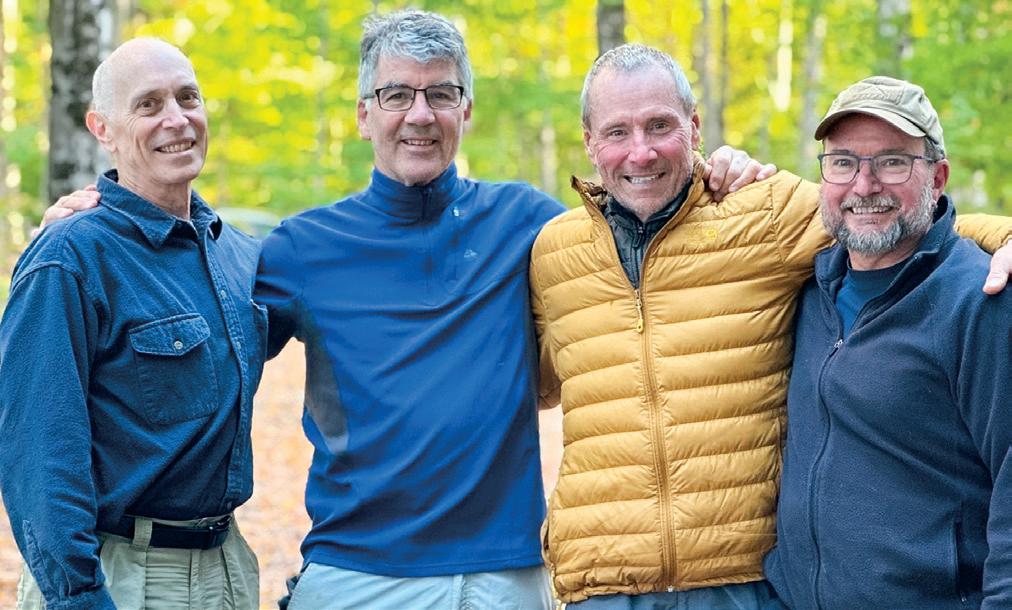
Mark A. Rothschild, of Lady Lake, FL, is a semiretired cardiologist with an active office practice in The Villages. “We built a second home in Plymouth, MA, in a large development called Pine Hills about 25 minutes away from where my daughter and her family live,” he writes. “We now have two grandchildren. I will be giving a presentation of my travels in 44 countries to the art society there in May, my website is: markrothschildphoto.com.”

1983
Joseph H. Keogh, of Boston, MA, missed his 40th class reunion last year, so organized one with some local classmates

Zack Spigelman, Steve Blatt and Jerry Murphy in Boston in January 2024. “It was great to see everyone and we had a wonderful weekend catching up, dining out, and even went curling. The wives (Tracy Keogh, Liz Blatt, and Andrea Spigelman) won the competition! You can see in the photo that Joe designed special reunion jackets for the outdoor event.”
Joseph P. Laukaitis, of Bethesda, MD, retired at the end of March after 35 years of private practice in rheumatology in downtown Washington, DC. He is looking forward to spending more time with his wife and classmate, Lya Karm, playing golf, cycling, reading, visiting their twin daughters, Kristina and Maria, and exploring the world. Lya retired in 2017, after 30 years practicing internal medicine with Kaiser Permanente. She is still working part-time, two days per week. They plan to be back in Upstate New York to see the total eclipse of the sun in April.
September 20•21, 2024
Edward (Drew) Malloy, of Santa Cruz, CA, is enjoying semi-retirement working two days per week at University of California Santa Cruz. “My daughter, Maggie, graduated from UC Davis and is working at Genentech. We are healthy and happy.”
Georgianne Arnold, of Pittsburgh, PA, retired as professor of pediatrics at the University of Pittsburgh Medical Center in January and will be working for Virtual Medical Practice doing remote consultation management for patients with inborn errors of metabolism.

Robert E. Lubanski, of Wilmington, NC, is working in a busy anesthesiology practice with a part-time job as vice president of medical affairs. “I work with John S. O’Malley quite often. Hopefully, retirement in the next year or so,” he writes.
1988
Regina Torelli, of Natick, MA, says “Hello, from icy Massachusetts! I celebrated 30 years of marriage during COVID and this year I am semi-retired as an anesthesiologist at Mass General Brigham. I have three wonderful grown children: a cybersecurity specialist, a PhD candidate, and an aspiring oncologist. We have been blessed to have Aunt Anne Mirth and Uncle Johnny Manis in our lives,” she writes.
1989
September 20•21, 2024
R. Eugene Bailey, of Manlius, NY, practices full-scope family medicine including obstetrics and sees patients at the Upstate Community Campus site. He has clinical interests in family-centered maternity care, and travels to Central America yearly for global health. He is team physician for the Syracuse Crunch, AHL affiliate to the NHL Tampa Bay Lightning, and has a special interest in evidence-based medicine. He is currently the program director for the family med-
Donna-Ann Thomas, MD ’99, knows she’s a role model. “To be able to tell a kid that looks like me that if I was able to go to medical school, they can too; to instill hope and the desire to strive toward something, that’s what makes me successful, not money or a title,” she says.
But Dr. Thomas has the titles to back her up: she’s associate professor of anesthesiology, division chief of pain medicine and regional anesthesiology, and vice chair of diversity, equity, and inclusion in the Department of Anesthesiology at the Yale School of Medicine.
It’s a long way from her upbringing in Jamaica. Although Thomas was interested in the idea of medicine and helping people, it didn’t seem a likely path. There were no science teachers at her school. Her grandfather was a pastor, and having attended many funerals, she was terrified of dead bodies. And her father expected her to stay in Jamaica.
Undeterred, Thomas came to the United States after high school, following her mother who had migrated to Queens, New York, to work as a nanny. Thomas worked full-time to help her family and attended college parttime at night. After a serious fall took her out of work, she was able to enroll in school full time, excelling in her science courses. Her professors urged her to consider medical school. Believing she couldn’t handle working with a cadaver, she enrolled in a master’s program in biochemistry instead.
Nonetheless, the desire to help people persisted. After a friend was admitted to medical school, Thomas asked if she could get permission to visit the anatomy lab. “I really expected I would pass out,” she recalls. Instead, the lab visit made her realize she’d been scared all those years for nothing. “I literally did a touchdown dance and said, ‘I’m going to medical school.’”
Thomas landed at Upstate, where, inspired by Patricia Numann, MD ’65, she decided to pursue surgery. She went to Graduate Hospital in Philadelphia for surgical residency but hit a roadblock in her third year when she couldn’t pass the Step 2 exam. “It really had more to do with my personal life at the time and the fact that I didn’t see myself doing surgery,” say Thomas.
Not letting a failure define her, Thomas reached out to the Upstate Department of Anesthesiology. Robustly endorsed by Dr. Numann, Thomas joined the Upstate anesthesiology residency program, ultimately becoming chief resident. (And to prove to herself she could do it, she enrolled in a study program and passed both Step 2 and Step 3 in surgery before beginning anesthesiology residency.)
Because of her surgical experience, Thomas was frequently asked to assist in the operating room during closures for pain procedures, leading her to pursue a fellowship in pain medicine at Upstate. “I went into medicine to help people who are suffering and managing pain is a big part of that,” she says. “Pain management combined the procedural aspect of anesthesiology, which I liked, with continuity of care and patient relationships, giving me the best of both worlds,” she says. After completing her fellowship, Thomas joined the Upstate Department of Anesthesiology, where she became the inaugural Director of Acute Pain. “We built a program to coordinate care, policy, and protocols for management of patients in acute pain,” she says. “Protocols regarding the use of regional anesthesia and nerve blocks for perioperative pain, for patients in sickle cell crisis, to help manage the patient’s pain around surgery and interventions for trauma patients coming in.”
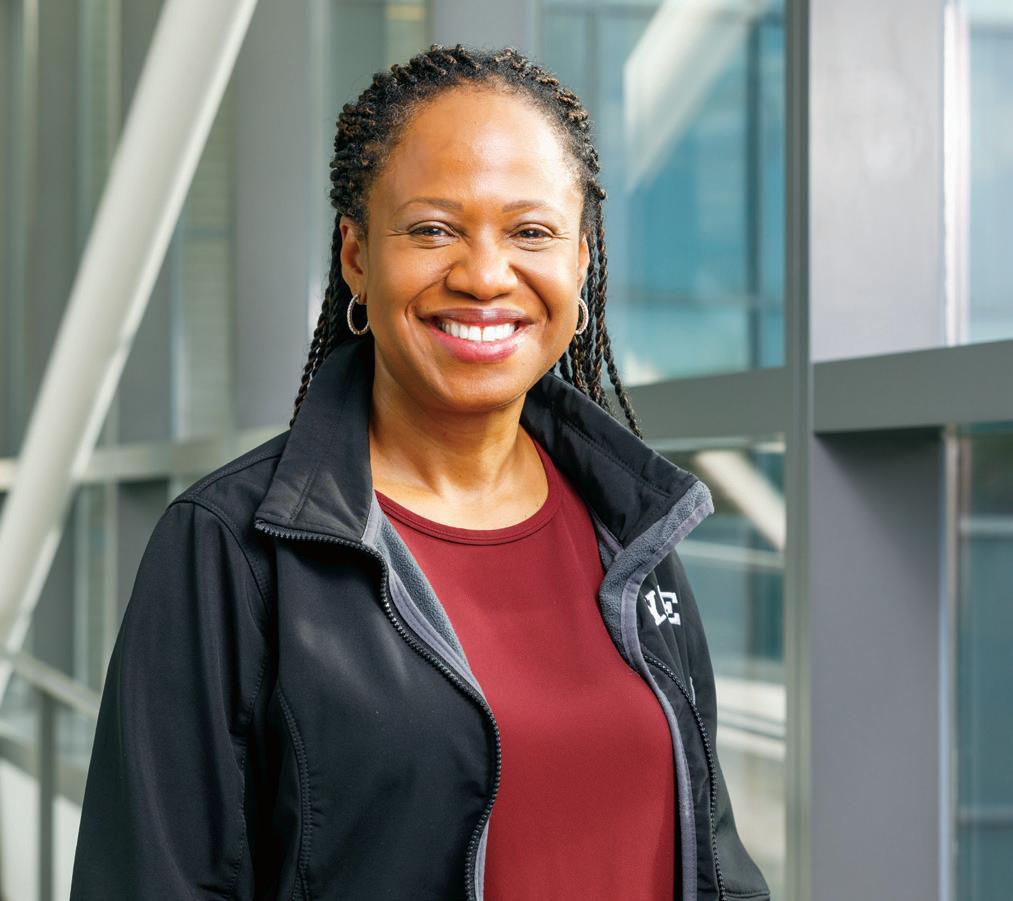
In 2013, Thomas was recruited to Yale School of Medicine. During her tenure, she has served as program director for both the pain fellowship and acute pain regional fellowship, but currently is focused on patient care and her vice chair of DEI role. “We want to make sure our residency class is fully diverse, our faculty is fully diverse and that we provide the resources needed for everyone to get to the same level,” she says. “We’re also working on programs to address needs outside the academic portion, such as mentoring, lectures and workshops.”
A woman of deep faith, Thomas spends nearly all her free time volunteering with her church or on medical missions that have taken her to Zimbabwe, Kenya, Mozambique, Honduras, Guyana, St. Lucia, Trinidad and Jamaica. “It’s been one of the great joys of my life,” she says.
—Renée Gearhart Levyicine residency program and precepts both residents and medical students. He is guest lecturer for the LeMoyne physician assistant program, advisory faculty for ALSO (Advanced Life Support in Obstetrics), and adjunct faculty for the Medical Care for the Entire Family program, Keiju Medical Center, Nanao, Japan. He has three children: Joanna, Frank J. ’20, and Zoe. Joanna works for the Syracuse mayor, Frank will complete anesthesia residency at University of Chicago and do a fellowship in critical care at Vanderbilt, and Zoe is an ICU trauma nurse at Upstate. His wife, Karen, is an assistant social worker for the Syracuse City School district.
Ronald C. Samuels, of Eastchester, NY, is sad to miss Reunion due to family events scheduled the same weekend. His eldest daughter, Rachel, was married in November and his middle child, Julie, entered medical school at Albert Einstein College of Medicine. “We get to see Julie rather frequently, sometimes after she’s done with clinical experiences she will let us take her out to dinner before bringing her back to her apartment,” he writes.

George N. Verne, of Memphis, TN, has been appointed the Robert Kaplan Executive Dean and vice chancellor for clinical affairs at the University of Tennessee Health Science Center College of Medicine, effective August 1, 2023. He previously served as senior associate dean for statewide operations and strategy, chair of the department of medicine in the College of Medicine, and chief of medicine at Regional One Health.
Denise C. Monte, of East Setauket, NY, and her husband, Anthony M. Szema, MD, recently celebrated their 25th wedding anniversary.
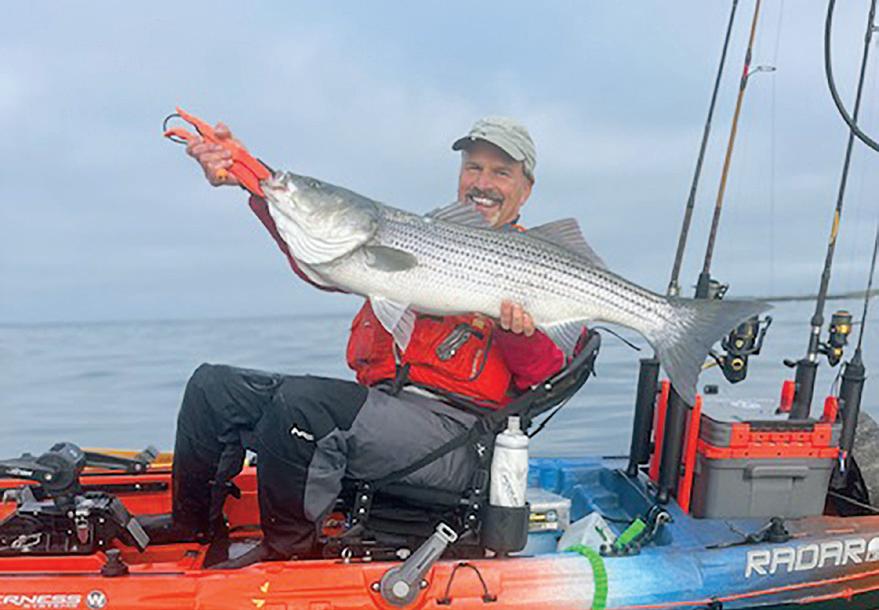
Dino A. Messina, of North Kingstown, RI, writes, “One of the benefits of living in the Ocean State is all the great shoreline access. I caught this 41-inch striped bass on my kayak last summer. Wishing everyone a Happy New Year!”
Mark E. Ohl, of Hamilton, NY, writes “Wanna Feel Old? I want to remind my classmates about our daughter, Jennifer, who became known to most of you when we brought her to class parties. Well, this will be shocking news: Jennifer is 40 years-old! She sends her best wishes to you all, especially, Frank X. Ratchford, who she had a crush on.”

September 20•21, 2024
Gregory G. Carnevale, of Canandaigua, NY, completed his second marathon 33 years after the first— losing three minutes from his original time! He has worked for United Healthcare since 2023 as commercial CMO for Delaware, New Jersey, New York, and Pennsylvania.
Jeannie Tam, of New York, NY, shared she and Shani L. Lipset recently celebrated
30 years of friendship, reminiscing about Upstate and forming new memories.

September 20•21, 2024
Rebecca L. Bagdonas, of New York, NY, writes, “Cindy Bodkin and I finally saw each other in person after five years! We brought our children (without husbands, lol) to Universal Orlando in July 2023. My daughters are Victoria (10), Annabelle (eight) and
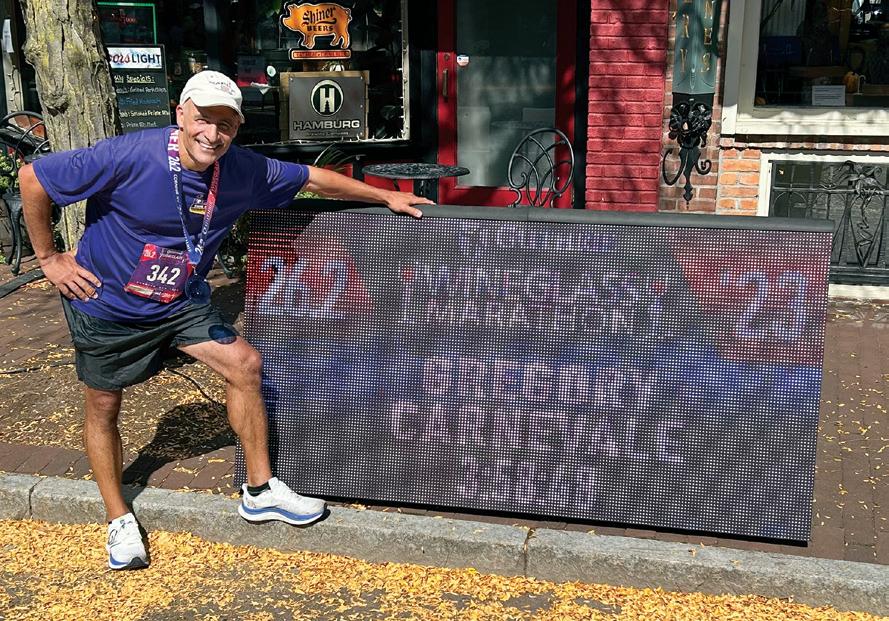

Felicity (5) Budhraja. Cindy’s son is Owen Edwards (10). We had an awesome time. Hope everyone at Upstate is braving the snow!”
Matthew “Casey” Becker, of Erie, PA, has assumed the role of chairman of cardiovascular medicine and interventional cardiology at the Lake Erie College of Medicine (LECOM) in Erie, which is opening Pennsylvania’s largest ambulatory surgery center to provide state-of the-art outpatient services for all cardiac and vascular procedures.
2004
September 20•21, 2024
2009
September 20•21, 2024
Kelly Billig, of Little Falls, NJ, has moved back to her home state and is practicing as a primary care medpeds physician with Village MD/Summit Medical Group. “I am looking forward to seeing folks at our reunion,” she writes.
Dodji V. Modjinou, of Las Vegas, NV, is the founder and owner of Advanced Rheumatology Associates of Nevada, in Henderson, NV. He began seeing patients in his new practice on October 10, 2023.
September 20•21, 2024
Arthur Zak, of Hillsborough, NC, and his wife, Christie Ton, DO, welcomed their third son, Alexander, in August 2023, joining four-year old twins. “We are always tired, but one baby is still better than newborn twins,” he writes.
September 20•21, 2024
Hannah M. Root, of Bethesda, MD, welcomed baby Elsa in October 2023 and started as a family medicine primary care provider with OneMedical in Chevy Chase, MD, in January.
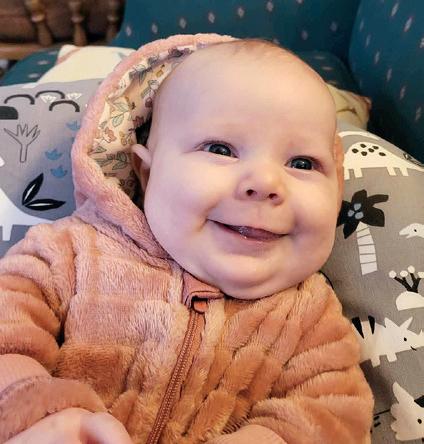
Zachary R. Visco, of Chapel Hill, NC, married Carina, his college sweetheart from Duke University, in January.

Arthur Zak ’16, his wife, Christie Ton, and their children
We’re on the lookout for feature ideas.
Is there a topic or current issue that you think alumni would be interested in reading about?
Do you know of an alumnus/a with an interesting or inspiring story to share? We welcome your suggestions! Please email your ideas to medalum@upstate. edu or submit online at medalumni. upstate.edu/story-ideas
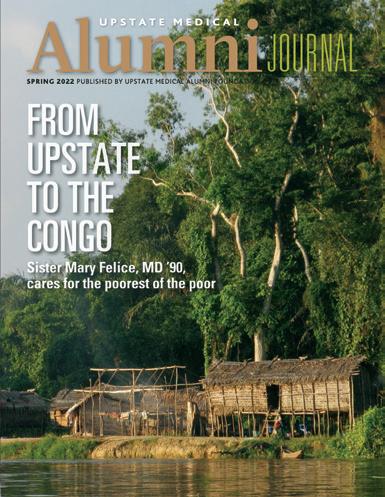

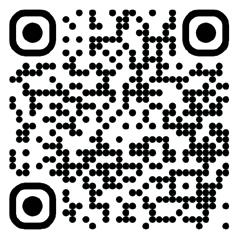
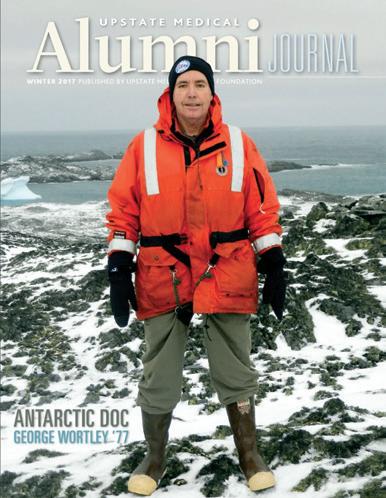

Jack L. Carey, of New York, NY, and Fanny F. Chen ’23 were married on April 29, 2023.

George Ellis, of Longwood, FL, shares his corrected contact information www. filmfreeway.com/georgeellis
Padala PJ Reddy, of Witchita, KS, recently went to India and gave a lecture to medical students and post-graduate students in his hometown about heart attack prevention. “To my surprise, the principal gave me an award for the presentation,” he writes.
Jeffrey S. Sneider, of Jamesville, NY, finished his last remaining clinical gig working as an attending for the elderly residents of Menorah Park Nursing Home—50 years after medical school graduation and 46 years after completing residency at Upstate Medical University. “Retirement beckons and is welcome,” he writes. “It has been a great ride.”

Stuart Trust, of Syracuse, NY, recently received one of the 2022-2023 Excellence in Teaching Awards for Foundations of Reasoning in Medicine. He was selected by students, who evaluated his teaching as exceptional.
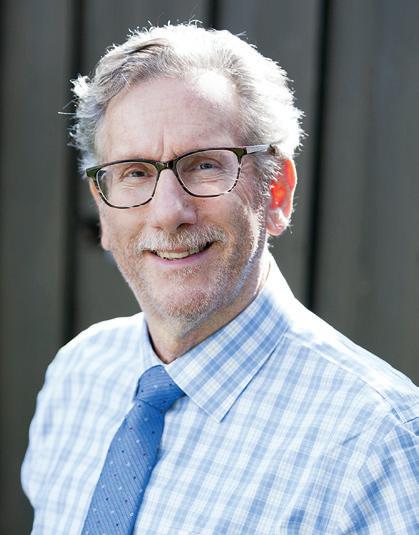
S.
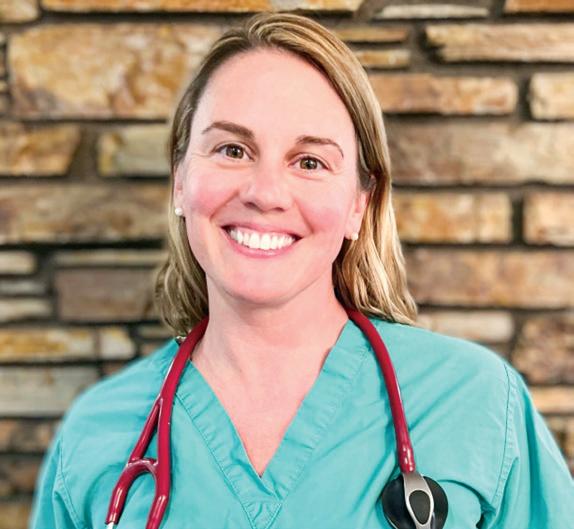

After completing her first year of medical school, Amy Sue Biondich, MD ’09, F ’15, returned to her home state of Wisconsin and spent her summer earning her pilot’s license. She bought a small propeller plane that would serve her well flying home for visits and in her future career as a locums tenens emergency medicine physician.
Over her decade working in emergency departments from Florida and Wisconsin to Minnesota and Arizona, Biondich realized how many of her patients’ ailments could be impacted by their habits and lifestyle choices. “There are so many chronic diseases that are preventable or reversible that people don’t have to be living with,” she says. “I wanted to address that.”

Living in Boise, Idaho, since 2020, Biondich continues doing critical access work in small rural hospitals in Idaho and Wisconsin. But in March 2023, bolstered with a fellowship and board certification in anti-aging and regenerative medicine, she launched a virtual functional medicine practice. “I love emergency medicine and don’t know that I would ever step away from it completely, but I want to empower people to take control of their health.”
Many of her patients come to her feeling not quite right, but without anything obviously wrong. “In modern healthcare, your doc-
tor visit is a seven- to 10- minute conversation with a blood pressure check and maybe some bloodwork. And when the basic bloodwork comes back normal, the patient is told they’re fine,” says Biondich, who earned a bachelor’s degree in anthropology and marine biology from University of California, Santa Cruz and a master’s in evaluative clinical sciences from Dartmouth College.
“I do longer visits to try to understand more about the patient, not only as a person, but all of their health frustrations and fears and what their health goals are. I’m a big fan of test and treat not guess and treat, so I perform a lot of functional medicine labs to come up with a personalized plan for each patient. Many of my recommendations are lifestyle changes, stress management, diet, and supplements.”
As a medical student, Biondich set out to be a general surgeon, focusing almost all her elective rotations on surgery. But after her first year of residency, she left her program, turned off by the misogyny she encountered and a future of long hours on call. A year later she re-matched into emergency medicine, completing her residency at Orlando Regional Medical Center, then returned to Upstate for a fellowship in wilderness and expedition medicine.
Working with then-program director Jeremy Joslin, MD, HS ’10, F ’11, Biondich began providing medical support to marathons and endurance competitions. In 2014, she established a concierge travel medicine company to serve as medical director for international ultra-endurance races, most of them held in remote far-flung locales, including Cambodia, Albania, Sri Lanka, and Bhutan.
Working three or four competitions a year put Biondich out of the country for eight to 10 weeks annually. “Trying to find a medical group accepting of that was going to be challenging so I gravitated to locums work so I could control my own schedule,” she says.
Biondich has always loved travel and enjoys an active lifestyle, including mountain biking, rock climbing, snowboarding, skiing, backpacking, and hiking, pursuits that helped prepare her for race medicine. “You have to be physically fit to do this work,” she says. “Many of the courses are not accessible by vehicle.”
At Jungle Marathon Brazil, for example, a competitor suffered a cardiac event and collapsed deep in the jungle. “We had to get in there with dirt bikes and pull him out on a handmade stretcher made from tree limbs,” says Biondich. “That’s a dramatic example. A lot of the time we’re dealing with blisters, dehydration, and heat illness.”
Although she’s had less hands-on wilderness medicine experience since the pandemic, Biondich loves the variety her career provides. “I like to do different things, to learn something new, to try something new,” she says. “I’m just excited to see what this new chapter brings.”
—Renée Gearhart LevyJOHN W. ESPER, of Gloversville, NY, died January 5. Dr. Esper entered the Army Air Corp in January 1944 at 18 years old as a tail gunner on a B29 bomber named Tabooma. He was stationed on Tinian Island in the South Pacific theater flying 31 missions before finishing his service in December 1945. After graduating from medical school, he started a two-year general practice residency at Rhode Island Hospital. He began his medical practice in 1952 in Gloversville, where he was known as “Doc” and worked for 40 years at his home office. He was the Gloversville School District physician for 29 years and a physician at the NLH Extended Care Facility for 10 years. Esper was survived by seven children: Anita, John A. Esper ’82, Kathleen, Daniel W. Esper ’86, Dr. Joan, James, and Nancy; 34 grandchildren; and 21 greatgrandchildren.
FREDRICK B. REMINGTON, of Rochester, NY, died August 12, 2022. Remington was survived by his daughter Marie; son Paul; and three grandchildren.
RONALD H. SPIRO, of Jerusalem, Israel, died November 22, 2023. Dr. Spiro completed a rotating internship at Mount Sinai Hospital in New York City and residency in general surgery at the Bronx Veteran’s Administration Hospital. He served in the U.S. Air Force for two years as commanding officer of the 3922nd USAF Hospital near Casablanca. After returning, he trained as a fellow in surgical oncology at Memorial Sloan-Kettering Cancer Center (MSKCC) from 1962-1965. From 1965 to 1972, while in private practice, he organized head and neck clinics in two New York City municipal hospitals and held teaching appointments at both Mount Sinai and New York Medical College. He then joined the fulltime staff at MSKCC until his retirement in 2000, serving as an attending surgeon on the head and neck service and as professor of clinical surgery at Cornell University College of Medicine. As a prolific author
and engaging speaker, he made many contributions to the management of head and neck cancer. Spiro was survived by his four children, including Jeffrey Spiro ’82; 19 grandchildren; and 19 great-grandchildren.
JOHN G. EGNER, of West Islip, NY, died August 24, 2023. Dr. Egner enrolled in the U.S. Army after high school and served for two consecutive years in Korea at the end of World War II. After his service, he attended Hamilton College on the GI Bill. After medical school he completed residency at Meadowbrook Hospital. He practiced medicine in private practice for more than 40 years. He was a pillar in the medical community, a mentor to many and a true talent in the operating room, retiring at the age of 74. Egner was survived by his six children, Susan, John, Jim, Heidi, Kristi and Katie; 17 grandchildren; and four great grandchildren.
HARVEY I. WOLFE, of Boca Point, FL, died February 13, 2022. Dr. Wolfe retired in 1991 from pediatric and adult allergy medicine after practicing in New York City and Long Island for more than 30 years. He also spent two years as captain in medical care in the U.S. Army. He attained the rank of board-certified emirate fellow in the American Academy of Allergy & Immunology and was a board certified fellow in the American Academy of Pediatric Allergy & Immunology. Wolfe was survived by his domestic partner, Judith Simon; daughter Sally; son Brian; and one granddaughter.
ELLA B. NOBLE, of Penfield, NY, died November 21, 2023. Dr. Noble was a longtime Penfield physician, retiring in 1997. She worked for Habitat for Humanity for many years and was active in the mission team at Penfield United Methodist Church and Grace Urban Ministries. Noble was survived by her two children, Martha and Tom; and four grandchildren.
CHARLES P. MEYER, of Ithaca, NY, died May 31, 2022. Dr. Meyer completed his pediatric residency at Upstate. He was a veteran of the U.S. Air Force and worked as a doctor at Tyndall Air Force Base near Panama City, FL. After his service, he settled in Ithaca in 1964, where he established the Northeast Pediatrics Practice and joined the staff of what is now the Cayuga Medical Center at Ithaca. He practiced for nearly 35 years, caring for children and their families. He was a member of Rotary International and was passionate about the PolioPlus campaign, part of a Global Polio Eradication Initiative to see that children throughout the world received Polio vaccinations for complete eradication. Meyer was survived by four children: Mary, Margaret, Derek and Jeffrey; and nine grandchildren.
JOHN W. LA CELLE, of Fern Beach, FL, died December 20, 2023. Dr. La Celle served in the Air Force for three years after medical school. After his service, he moved to Pleasant Valley, NY, and established his private medical practice, serving the local community for many years. La Celle was survived by his wife, Eleanor; his four children, Daniel, Ned, Brett, and Kimberly; and many grandchildren and great-grandchildren.
1961
ALAN J. POLLACK, of Oakland, CA, died January 21. Dr. Pollack interned at the VA Hospital in Westwood, CA, and completed a three-year psychiatric residency at UCLA. He served for two years as a naval officer during the Vietnam War, in charge of the psychiatric ward in Guam. After returning to California, he spent 28 years at various Kaiser Permanente locations and was the chief of psychiatry for 17 years in Woodland Hills. After retirement, he volunteered with Habitat for Humanity and began a long relationship with the Audubon Society. Pollack was survived by his wife, Patti; daughter Jenny; son Adam; and three grandchildren.
WILLIAM J. LOFTUS, of Cazenovia, NY, died January 14. Dr. Loftus completed his internship at UCLA, before being drafted in the U.S. Army. He had a distinguished military career serving as captain from 1965 to 1966. He was a battalion surgeon in the 1st Air Calvary Division in the Republic of South Vietnam, where he received the prestigious Combat Infantryman Badge for his heroics. Returning home, he completed his residency at Upstate Department of Obstetrics and Gynecology. He began his career as an attending, where he found his love of teaching. He continued to mentor and teach young physicians for his entire career over five decades. He joined as the young partner to Adams, Rayder & Loftus, currently Loftus, Ryu & Bartol. Loftus delivered an estimated 15,000 babies. He was survived by his wife, Cynthia; children Stacia, Shanna, Sloane, Shamus, Sydney, Shanon, Severn, Sennah, and Sonnet; and 13 grandchildren.
JEROME GOLDSTEIN, of San Francisco, CA, died November 15, 2023. Dr. Goldstein moved to San Francisco in 1969-70 where he became chief of neurology at St. Francis Hospital and founder of the San Francisco Headache Clinic. Goldstein was featured in the documentary film Born This Way: The Science of Sexual Orientation. He was a noted authority on HIV/AIDS-related neurological problems and lectured extensively on the subject worldwide. He and his husband gave generously of their time and resources to the nascent LGBTQ+ equality movement in the 1970s and 1980s. He was regarded as one of the heroes of the battle to conquer HIV/AIDS. Goldstein was survived by his niece, Judith Weidman; and nephews Sydney Weidman and Joshua Weidman.
1971
COLONEL RICHARD A. GOLDMAN, of San Antonio, TX, died October 27, 2023. Dr. Goldman interned at Upstate and completed a general surgery residency at Sinai Hospital of Baltimore. After residency he entered active duty in the Army Medical Corps. He attended the AMEDD basic office course at Fort Sam Houston in
1976. His first assignment was at the 45th Field Hospital, Leghorn, Italy, where he served as staff surgeon and chief of clinics. In 1979, he was assigned to Dewitt Army Community Hospital, Fort Belvoir, VA, as a staff surgeon. In 1984 he was transferred to Patterson Army Community Hospital, Fort Monmouth, NJ. He was chief, department of surgery and deputy commander of clinical services prior to assuming command of the Fort Monmouth MEDDAC in 1990. During his tenure as commander, he concurrently held the position of director, Delaware Valley Health Services System. Goldman was assigned to the Academy of Health Sciences AMEDD Center and School at Fort Sam Houston as the chief, department of medical science in 1994. He retired from the Army Medical Corps in 1998 after 22 years of service. In retirement, he became dedicated to the non-profit TEAMability, founded by his wife, Barbara, in 2003. Goldman was survived by his wife, Barbara; son Jonathan; daughters Rachel and Megan; and two grandchildren.
ROBERT N. ELKINS, of Bonita Springs, FL, died October 10, 2020.
ROBERT J. KASULKE, of Watertown, NY, died November 13, 2023. Dr. Kasulke was a 1999 graduate of the U.S. Army War College. He completed his residency in general surgery at Montefiore Health and Hospital Center. He moved to Columbia, MO and completed his fellowship in vascular surgery at Columbia Health Science Center. He then worked as director of surgical resident’s research program and chief of the division of vascular surgery at East Tennessee State University Quillen-Dishner College of Medicine from 1981-1983. From 19831989 he practiced with the Saranac Lake Surgical Group and then the Northeastern Surgical Specialists in Pennsylvania. In addition to private practice, he served in the U.S. Army Reserve from 1980-2012. He held assignments as a general surgeon and chief of surgery and commanded detachments 1, 2 and 3 of the 310th Field Hospital and 865th Combat Support Hospital. During his career he held many other appointments and assignments. Kasulke was survived by his daughter, Kristen; son Stephen; and three grandchildren.
EVAN M. DENTES, of Fayetteville, NY, died December 25, 2023. Dr. Dentes completed his five-year residency in general and vascular surgery in 1981 and joined General and Vascular Surgery. He was granted surgical privileges at St. Joseph Hospital, Crouse Hospital, and Community Hospital and was adjunct professor at Upstate Medical University. His dedication to his profession was unwavering and he remained an active surgeon at Trinity Health until his passing. Dentes was survived by his wife, Melina; son Evangelos; daughter Demetra; five siblings and many extended family members.
JEFFREY L. HANSON, of Pittsford, NY, died October 16, 2023. Hanson completed his residency at University of Connecticut’s Department of Family Medicine in 1984 becoming board-certified in both family medicine and geriatric medicine. Hanson took over the practice of C.T. Andolina, MD, in Mt. Morris. Over the next 15 years, he modernized the practice and grew it to three locations, collectively known as Genesee Valley Family Medicine, selling it to the University of Rochester in 1998. He served on the Livingston County Board of Health for 22 years; medical director for multiple nursing homes; doctor of Geneseo Central School; and clinical instructor of University of Rochester Medical School. Upon retirement, he was appointed professor emeritus at the University of Rochester. Hanson was survived by his wife, Sarah; daughters Ellie and Lyz; and his mother Grace.
MARYA C. GENDZIELEWSKI, of Westvale, NY, died January 6. Dr. Gendzielewski was a board-certified endocrinologist and an attending physician at St. Joseph’s Hospital in Syracuse, NY, for more than 30 years. She was a true physician and loved the practice of medicine, considering it an honor and a pleasure to care for her patients. Gendzielewski was survived by her sister, Alexa; and several cousins.
MARGHERITE BONAVENTURA, of Syracuse, NY, died October 20, 2023. Dr. Bonaventura was a board-certified general surgeon with special expertise in complex wound care. She worked at Upstate and Syracuse VA Medical Center. In 1974, she began her general surgery residency. She became chief resident and was awarded the burn fellowship. Bonaventura was the second female surgeon in Central New York and was a role model for aspiring female surgeons. She became the assistant program director of the general surgery residency and educated hundreds of surgical residents. Bonaventura contributed to the establishment of the Upstate Breast Care Center and was appointed director of the burn unit at Upstate. She was awarded The Frederick Hyde Teaching Award in 1992 and 1995. Bonaventura was survived by her sisters, Jeanne Aiello and Maria Bonaventura.
BEDROS P. MANGIKIAN, of McLean, VA, formerly of Syracuse, NY, died November 23, 2023. Dr. Mangikian earned his medical degree from the American University of Beirut School of Medicine with high honors. He won a scholarship from British-Armenian businessman Calouste Gulbenkian for his academic brilliance. He completed his residency in general and vascular surgery at Upstate. He left the states due to his visa and spent two years working in Armaco in Saudi Arabia followed by a practice in Beirut, Lebanon, before returning to the U.S. Mangikian worked for a hospital in Philadelphia and then settled in Syracuse, establishing a private surgical practice. Mangikian was survived by his sister-in-law Seta; two nieces; and six nephews and their families.
GEORGIANNA K. MITCHELL, of Highland, MD, died December 29, 2023. Dr. Mitchell received her medical degree from Michigan State University College of Human Medicine followed by an anesthesia fellowship at Upstate. Her career as an anesthesiologist was marked by her compassionate care and witty mantra. Mitchell was survived by her daughters, Karen and Jacquelyn; and seven grandchildren.
WOLFRAM RIEGER, of Gladwyne, PA, died June 23, 2020. Dr. Rieger received his medical degree from the Medical College of University of Freiburg, Germany. He completed a surgical internship in Sigmaringen and emigrated to the United States in 1960 to complete a residency and fellowship in psychiatry in Rochester, NY. He practiced psychiatry in Philadelphia from 1971 until his passing, working both in the Department of Psychiatry at the University of Pennsylvania, as well as his own private practice. Rieger was survived by his wife, Catherine; children Bettina, Jonathan, and Heidi; and six grandchildren.
RAJA W. ABDUL-KARIM, of Inverness, FL, died November 23, 2023. Dr. AbdulKarim earned his medical degree from the American University of Beirut and completed a fellowship in fertility and endocrinology at Yale and UCLA. In 1963 he started his long career at Upstate in the Department of Obstetrics and Gynecology. He was appointed director of numerous divisions including the third medical student clerkship. Twice, he received the
award for Excellence in Teaching. He was a well-known and respected author, educator, and consultant nationally and internationally. He was acclaimed for his research on “The Effects of Oxytocin on Renal Function in Human Pregnancy” and “The Role of Estrogens in Fetal Development and Blood Flow Distribution.” Abdul-Karim was survived by his wife, Margaret; and sons Christopher and Kenneth.
BURK JUBELT, of Cazenovia, NY, died December 15, 2023. Dr. Jubelt earned his medical degree from the University of Kansas Medical School. He completed his residency in neurology at Presbyterian Hospital, Columbia University, and a fellowship in virology and immunology at Johns Hopkins University. In 1979 he joined the clinical faculty of Northwestern University in Chicago and started a laboratory focusing on amyotrophic lateral sclerosis (ALS) research. In 1989 he relocated to Syracuse and joined Upstate as professor and chairman of the Department of Neurology. He also served as professor of microbiology and immunology. His research broadened to include polio, post-polio syndrome, multiple sclerosis, and other areas of neurovirology. Jubelt was survived by his wife, Ann; daughter Lindsay; son Matthew; and five grandchildren.
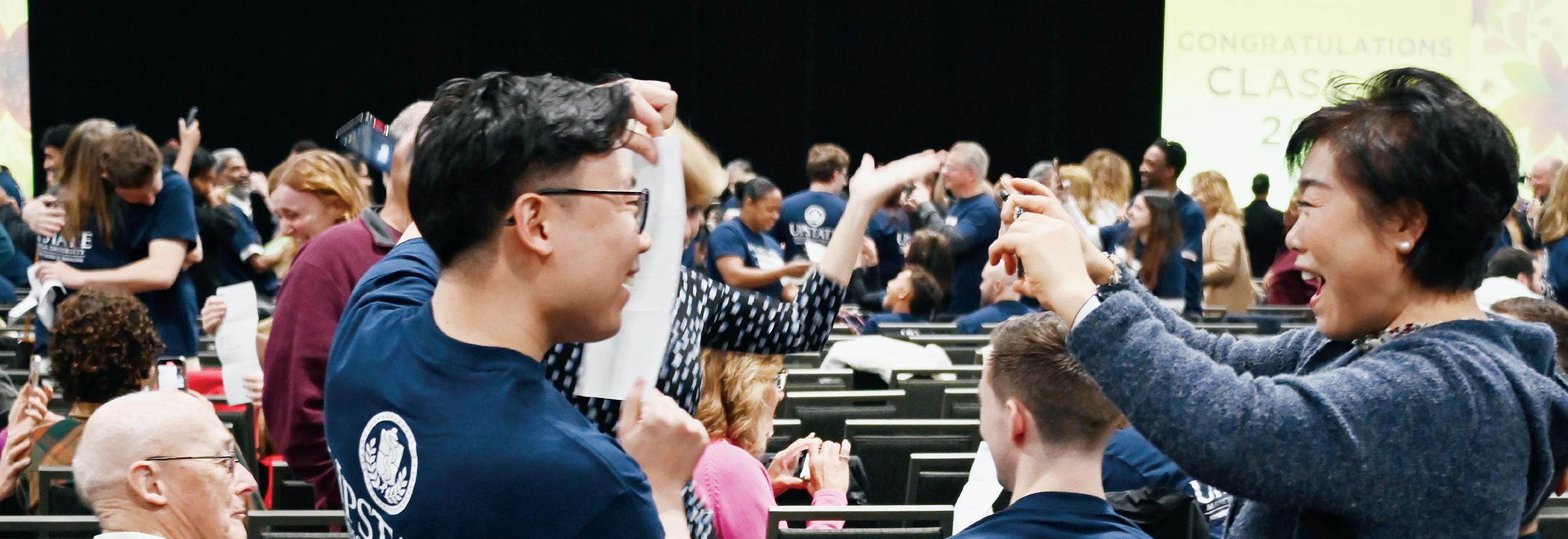
On March 15, 140 fourth-year students from Upstate Medical University’s Norton College of Medicine joined graduating medical students from across the country in learning where they will do their residency training in their chosen specialty.
More than half of students will enter the primary care specialties comprised of internal medicine (35), pediatrics (12), family medicine (9), medicine/pediatrics (4) and obstetrics and gynecology (7). Seventy-seven students will train in New York State, 27 remaining in Syracuse with 20 at Upstate and seven at St. Joseph’s Health.
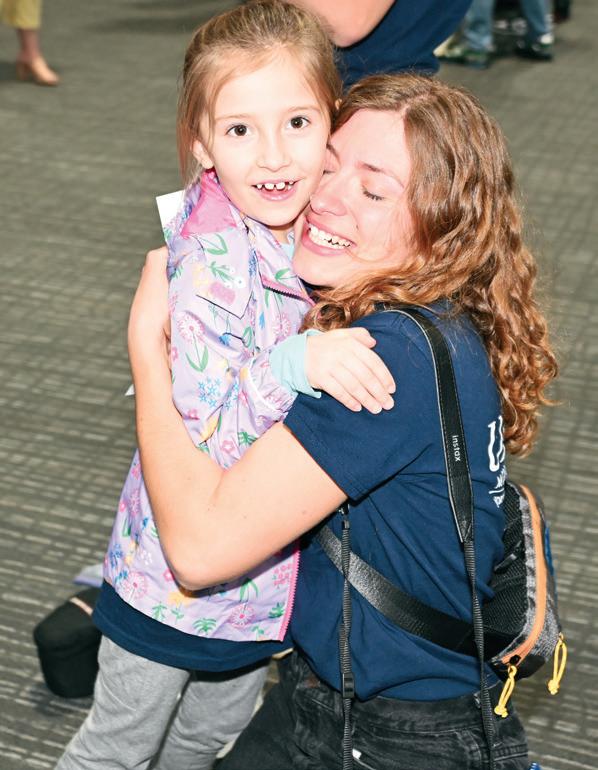
“Residency is maybe the most significant period of time for a doctor because it’s so intensive,” says Norton College of Medicine Dean Lawrence Chin, MD. “The Match Day celebration with family and friends is a perfect way to showcase this amazing accomplishment in a medical student’s life.”
To view the complete match list, visit medalumni.upstate.edu/match.










